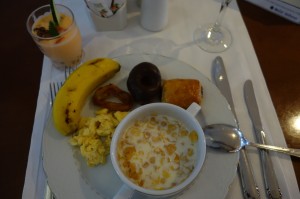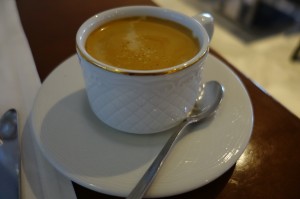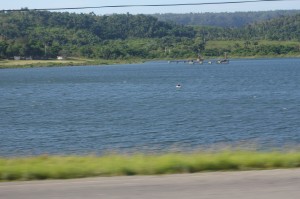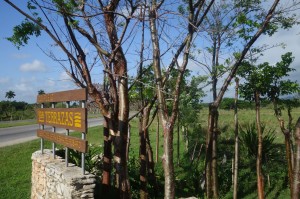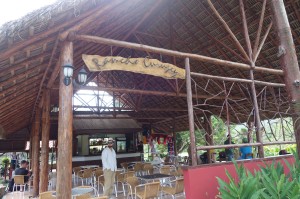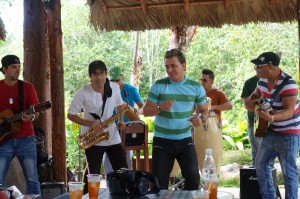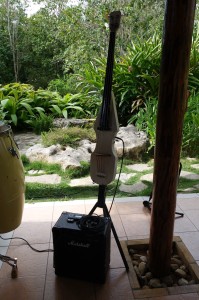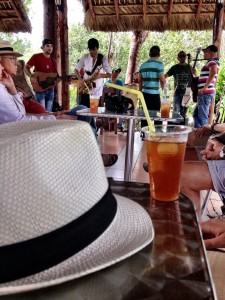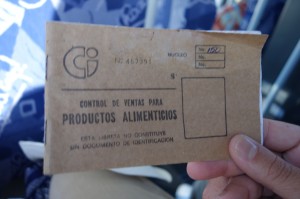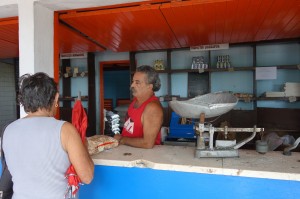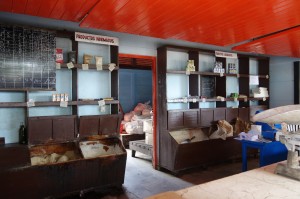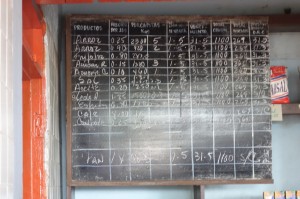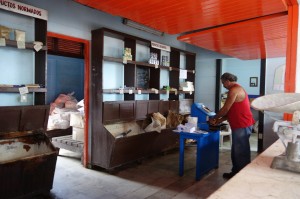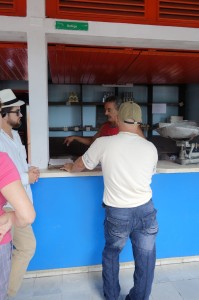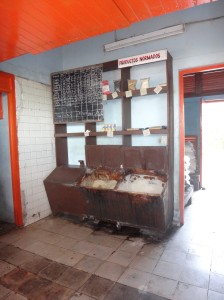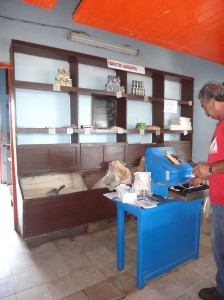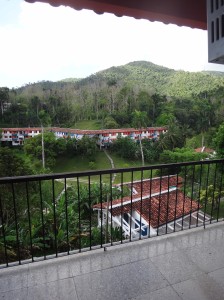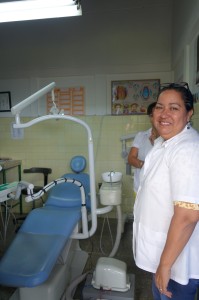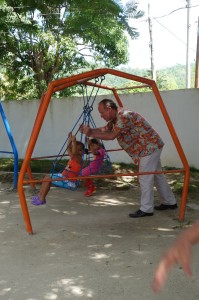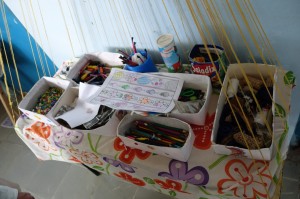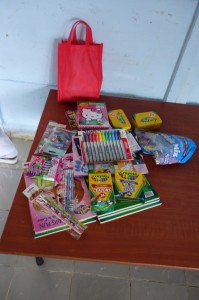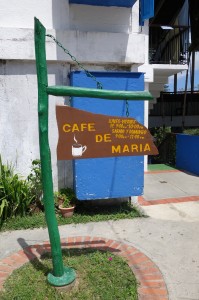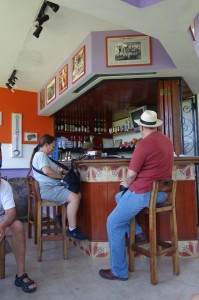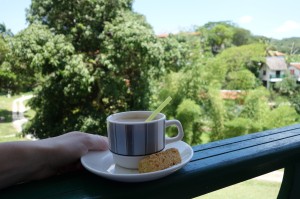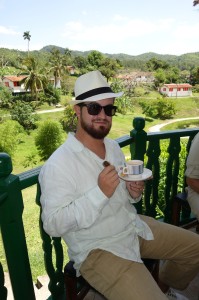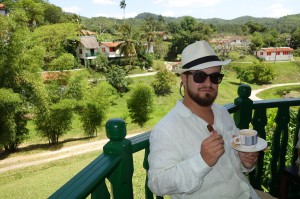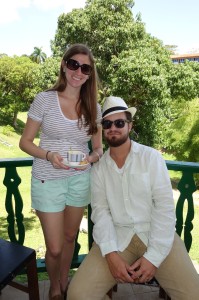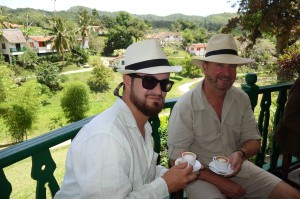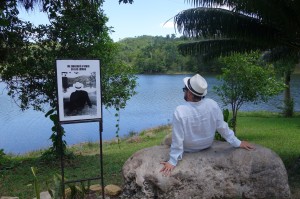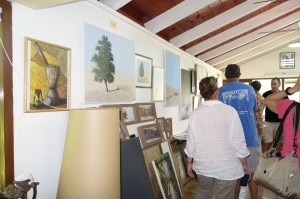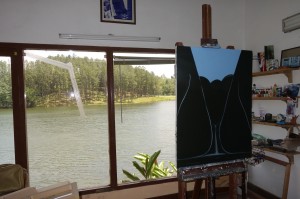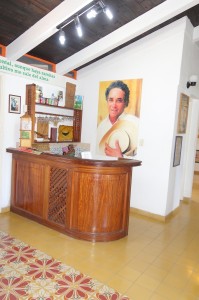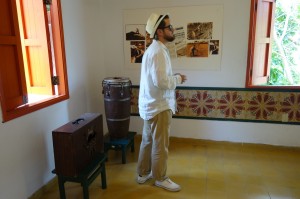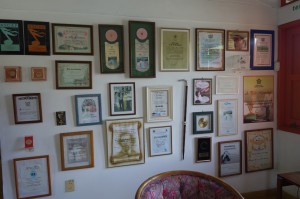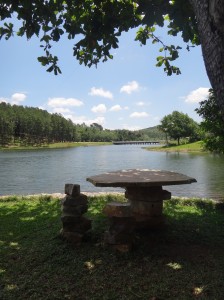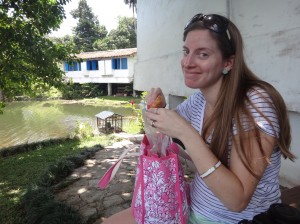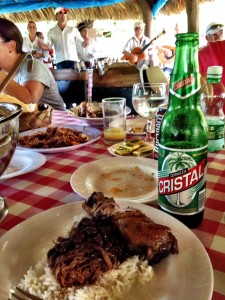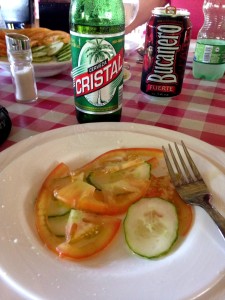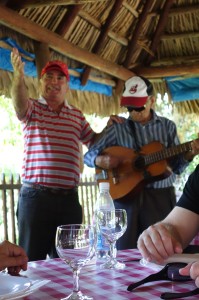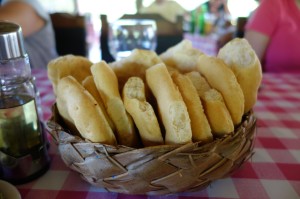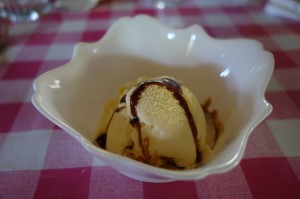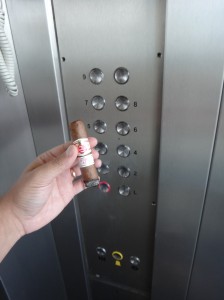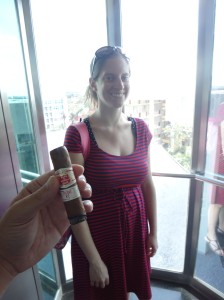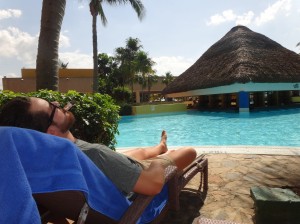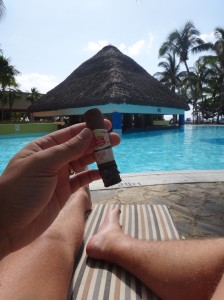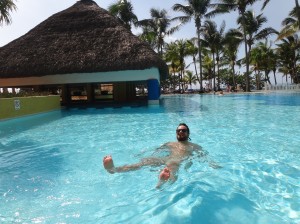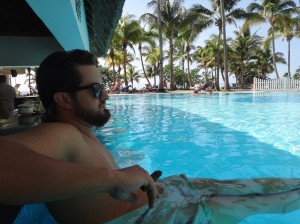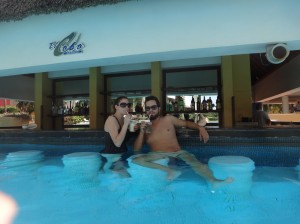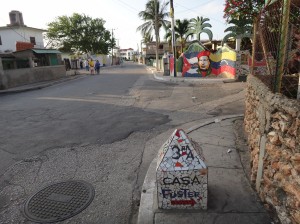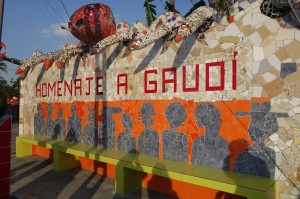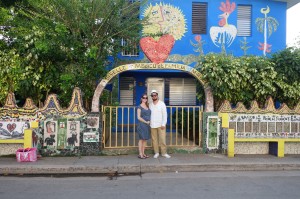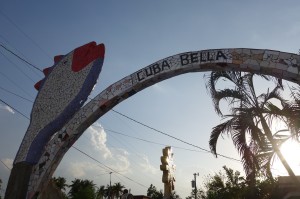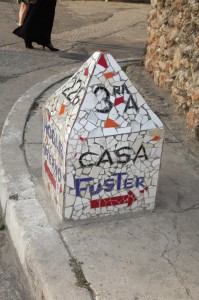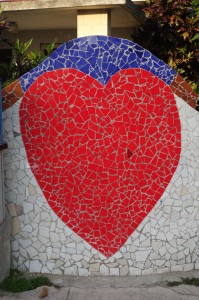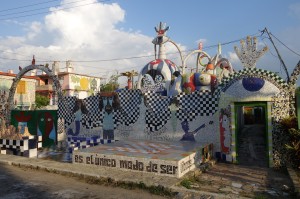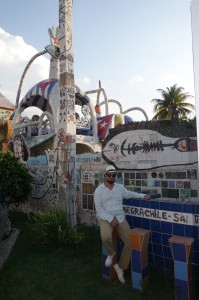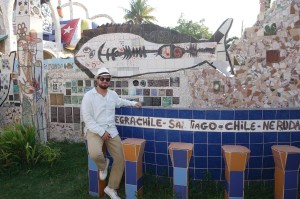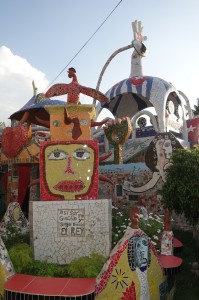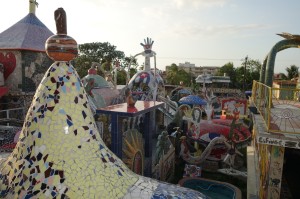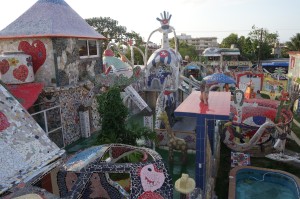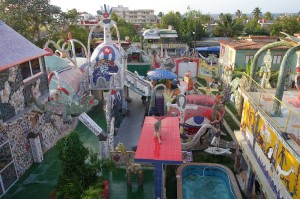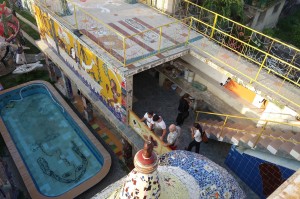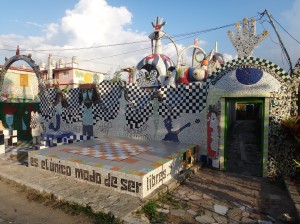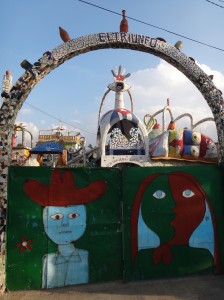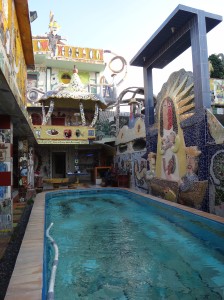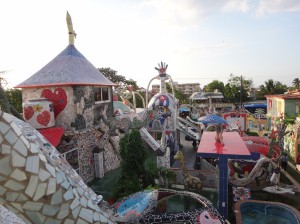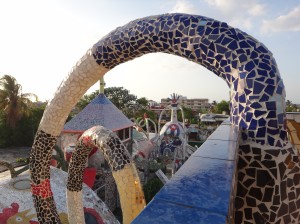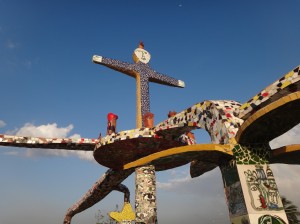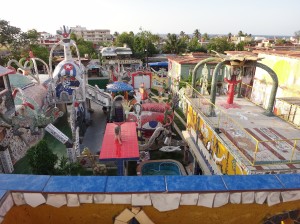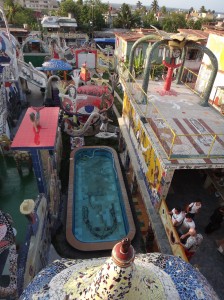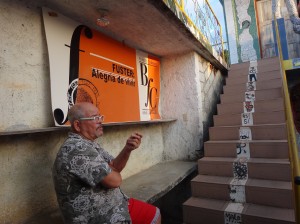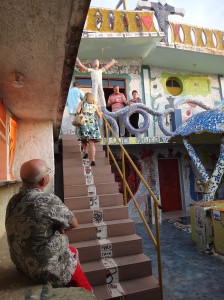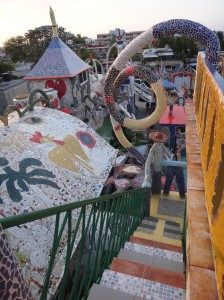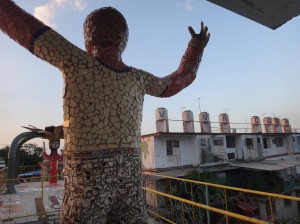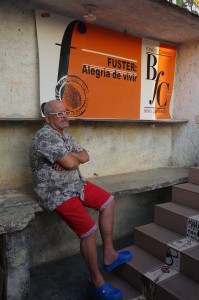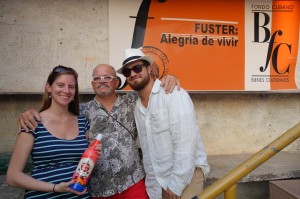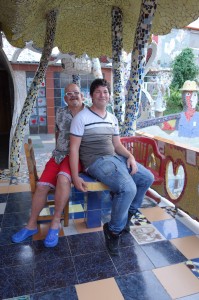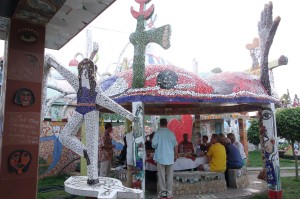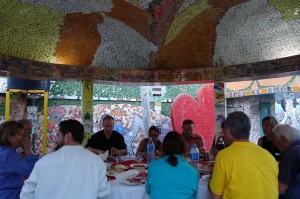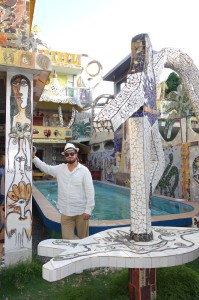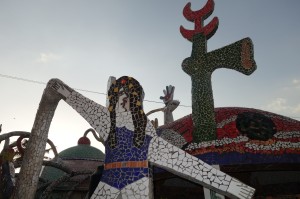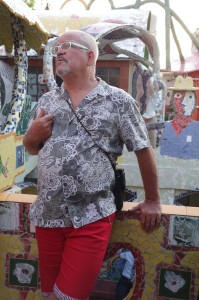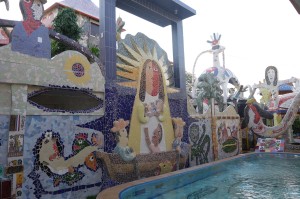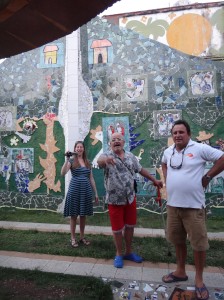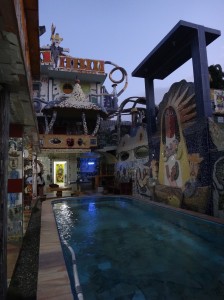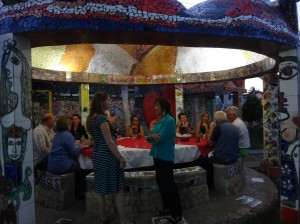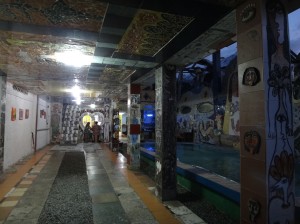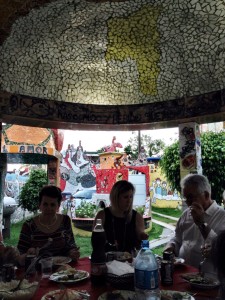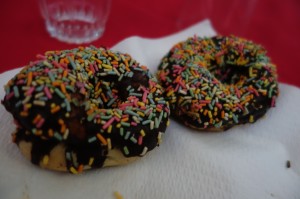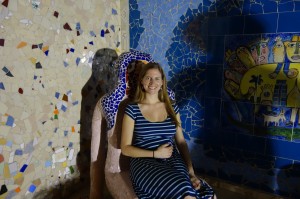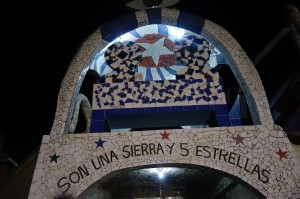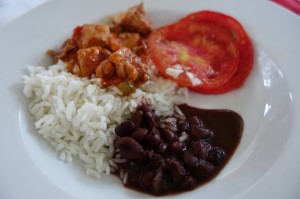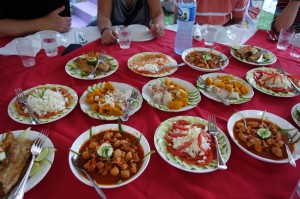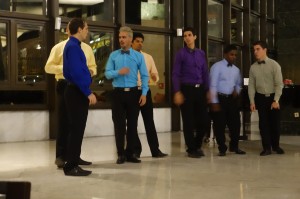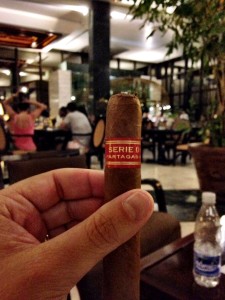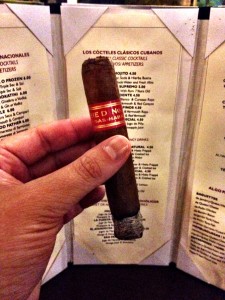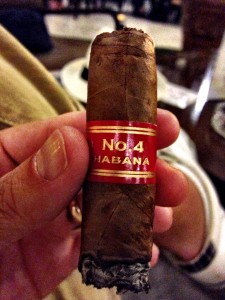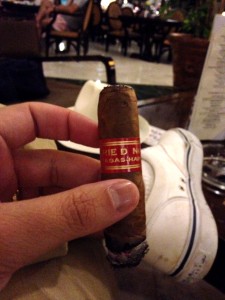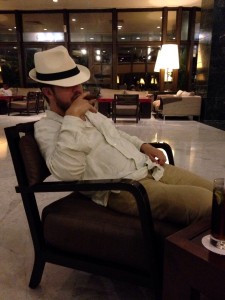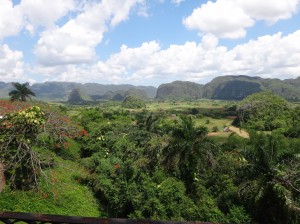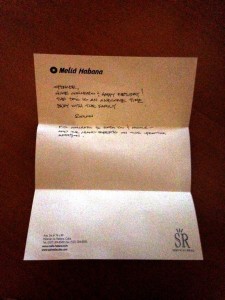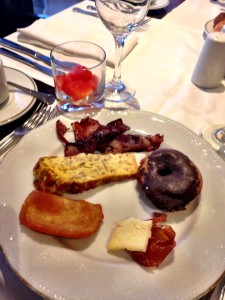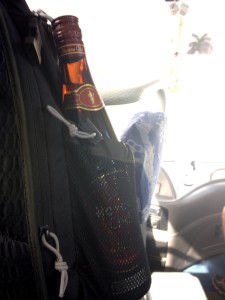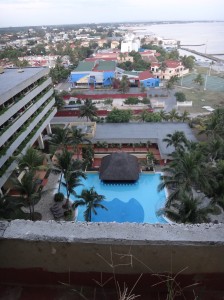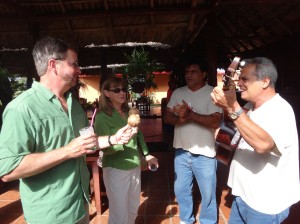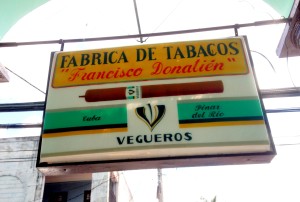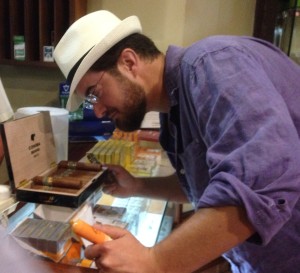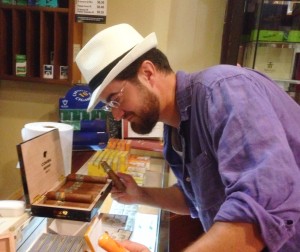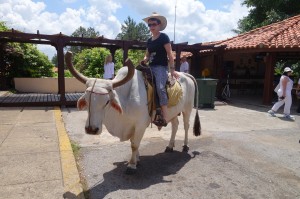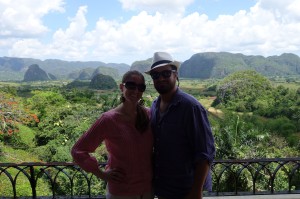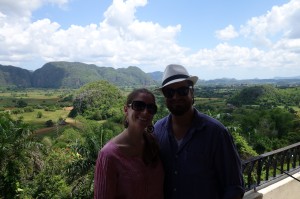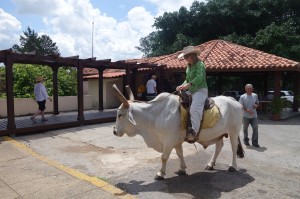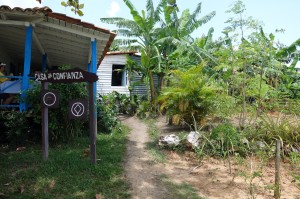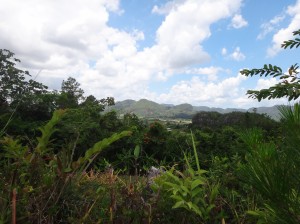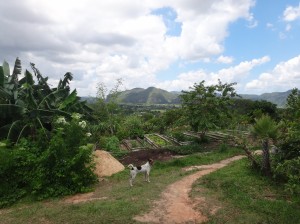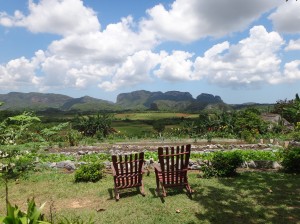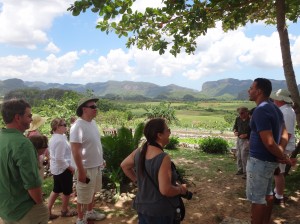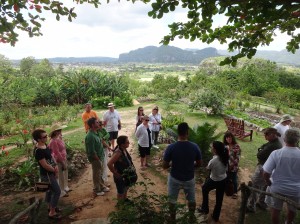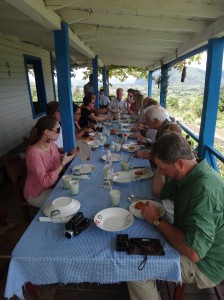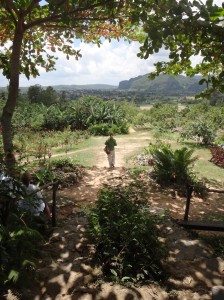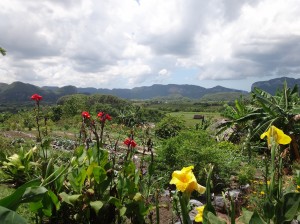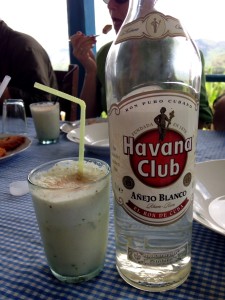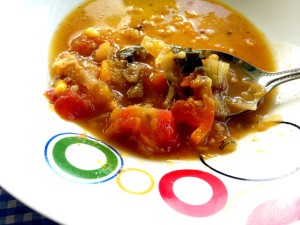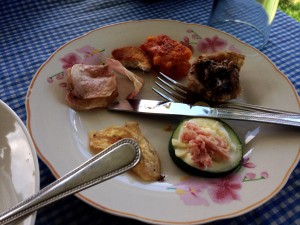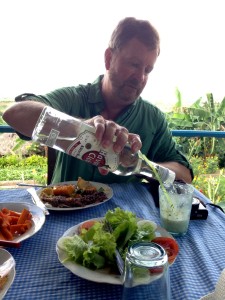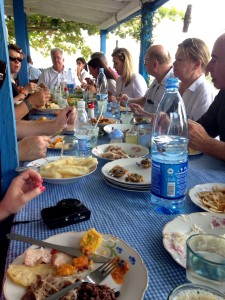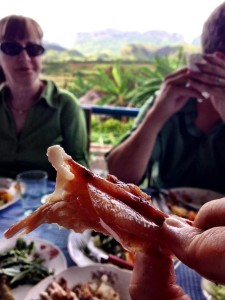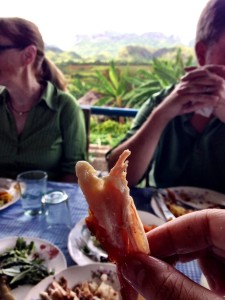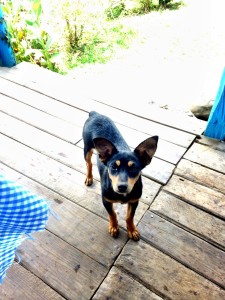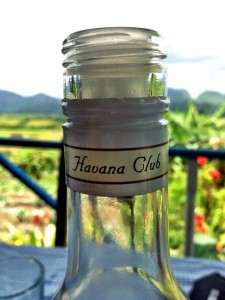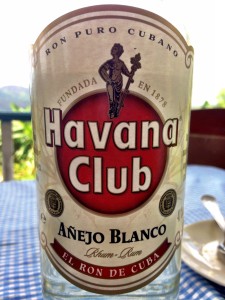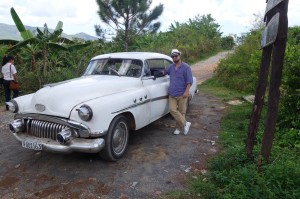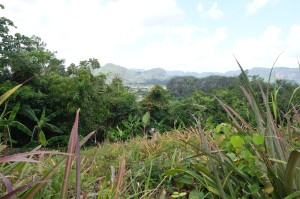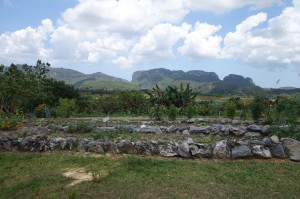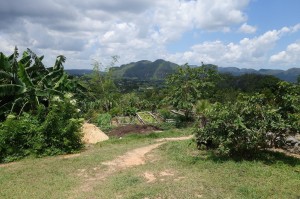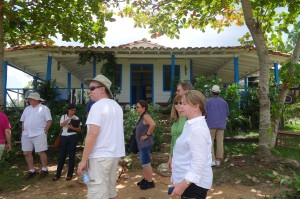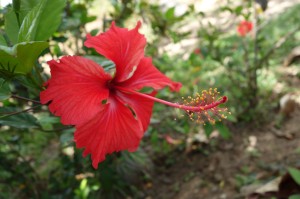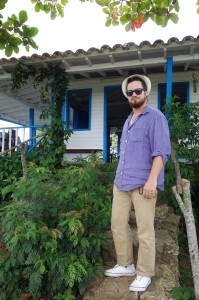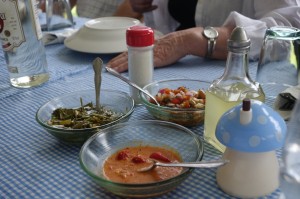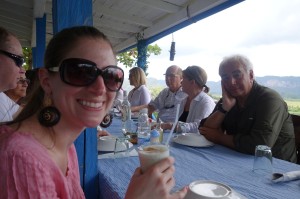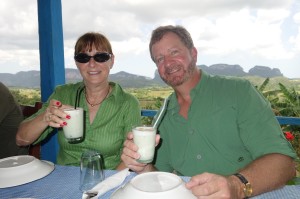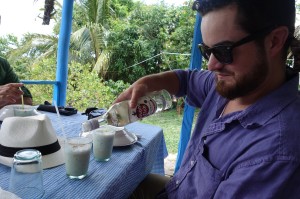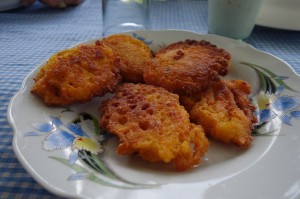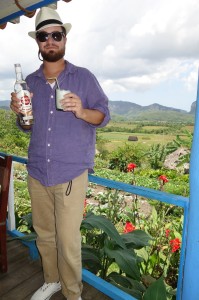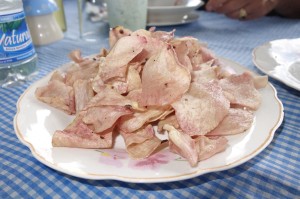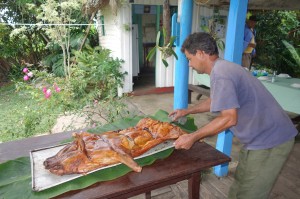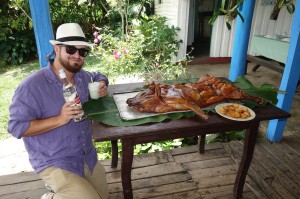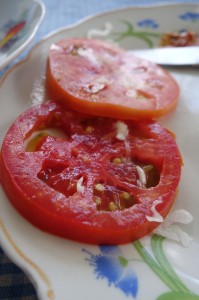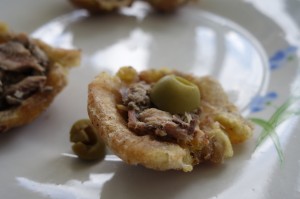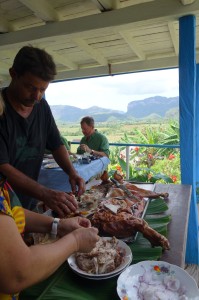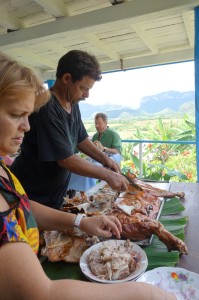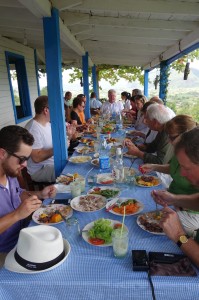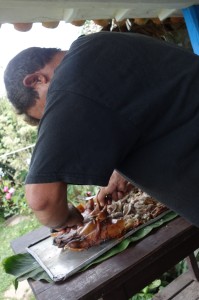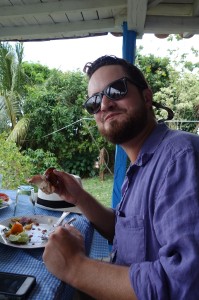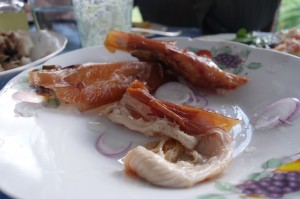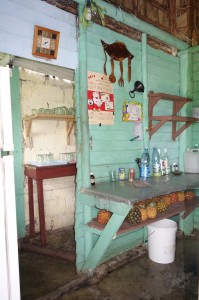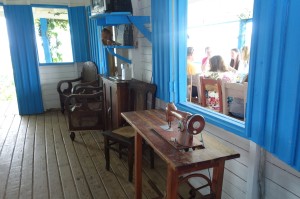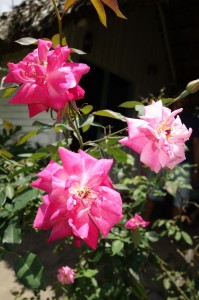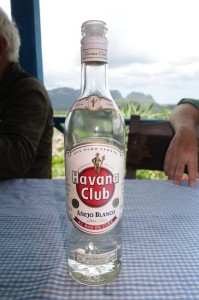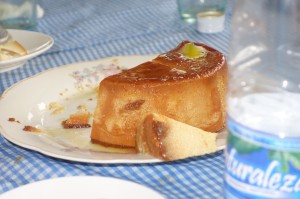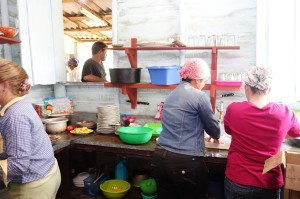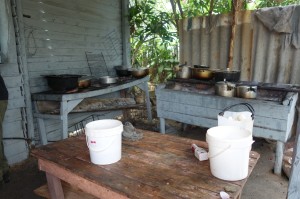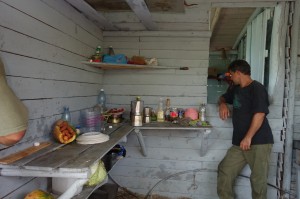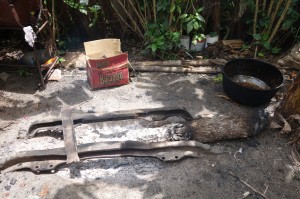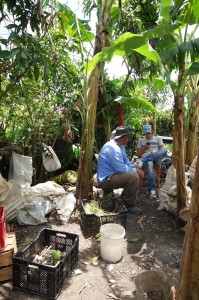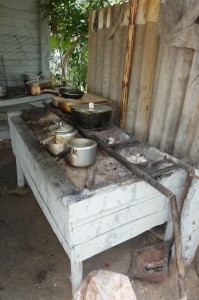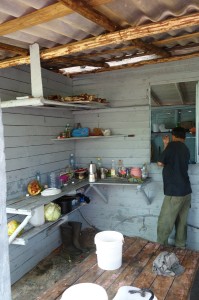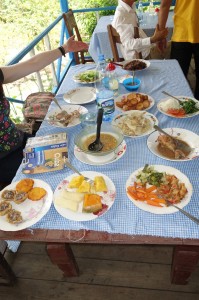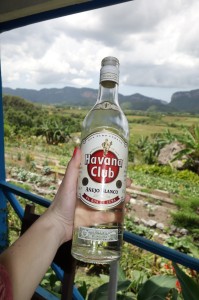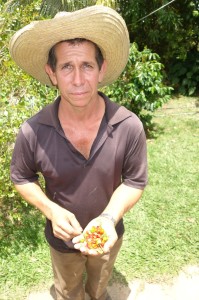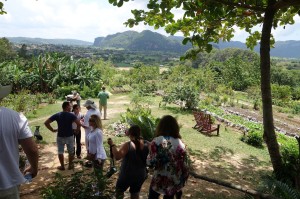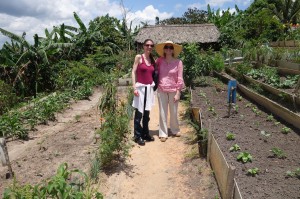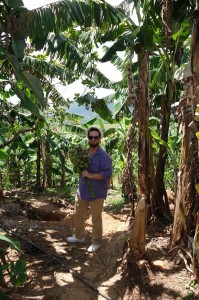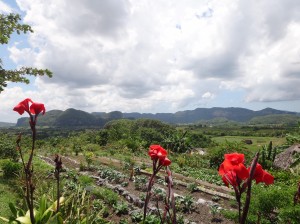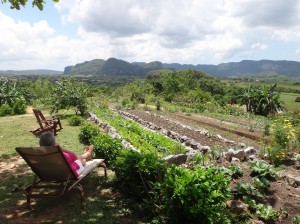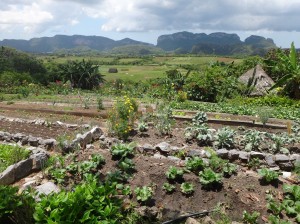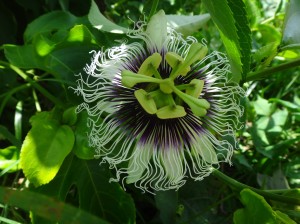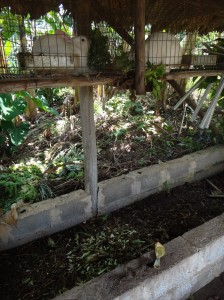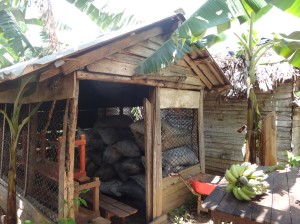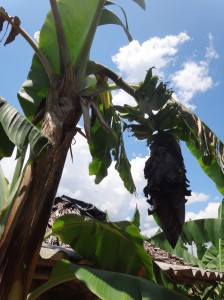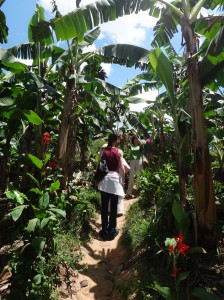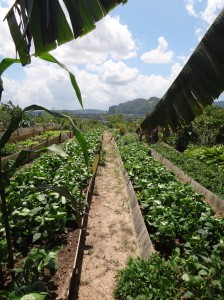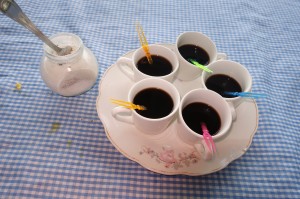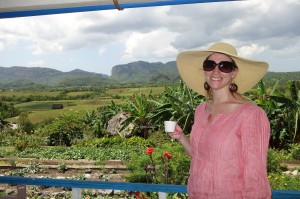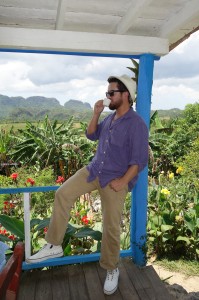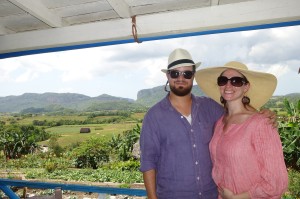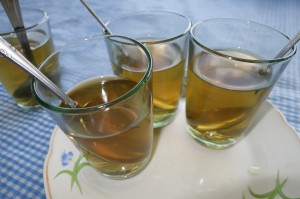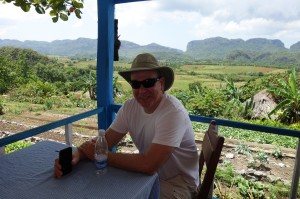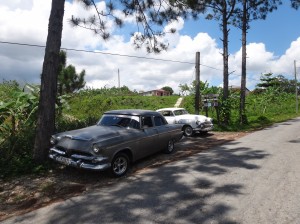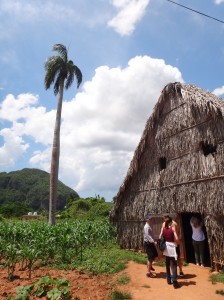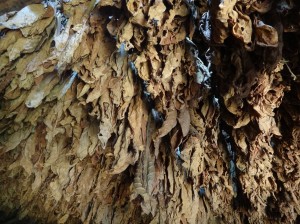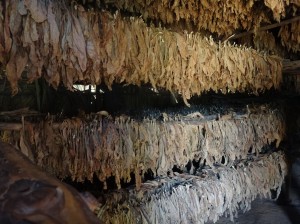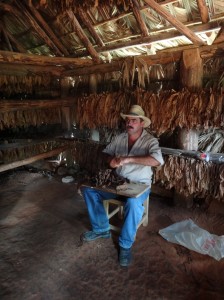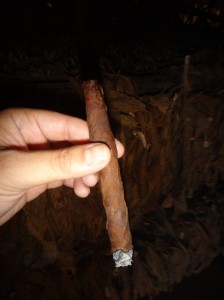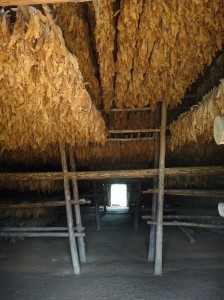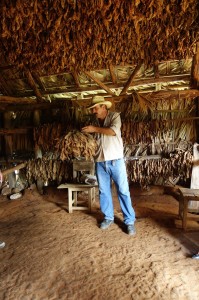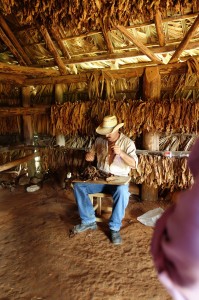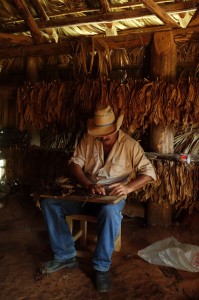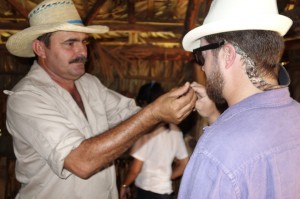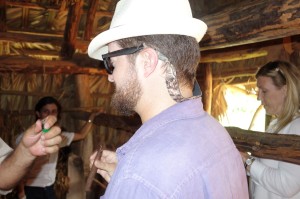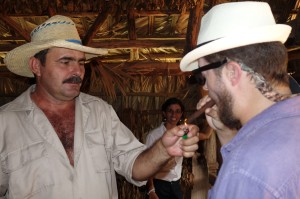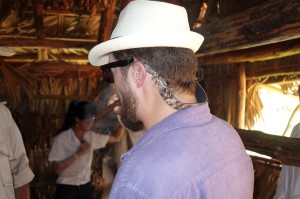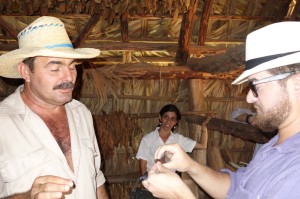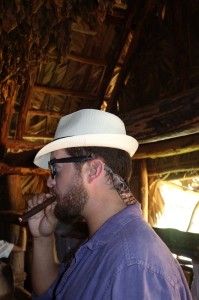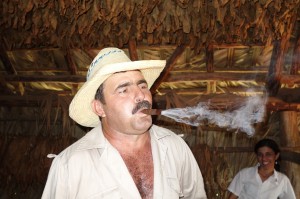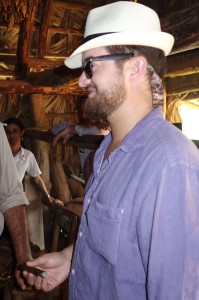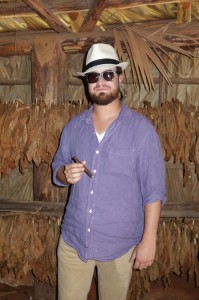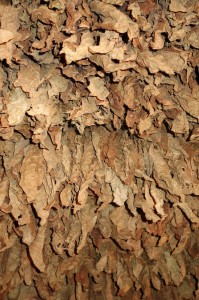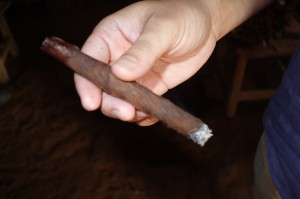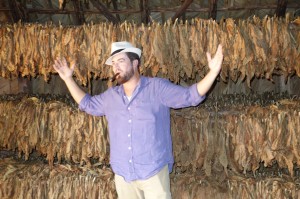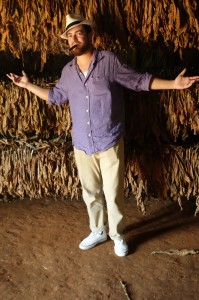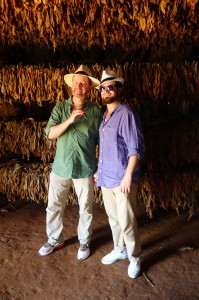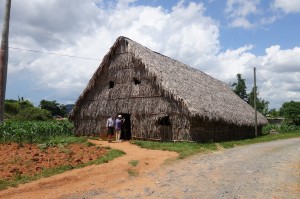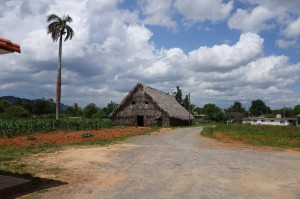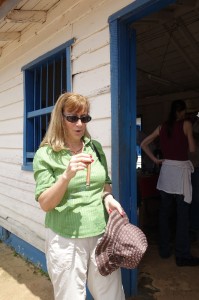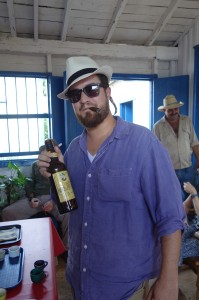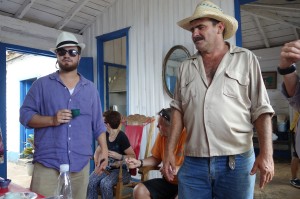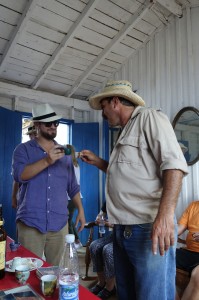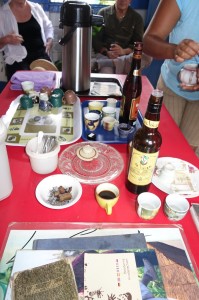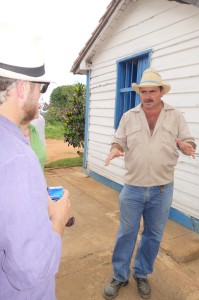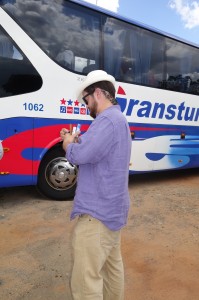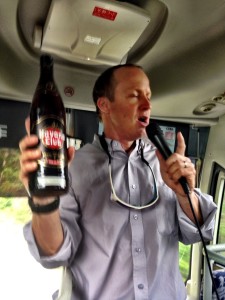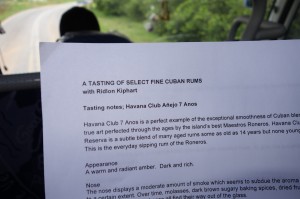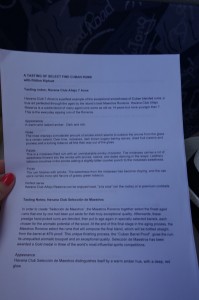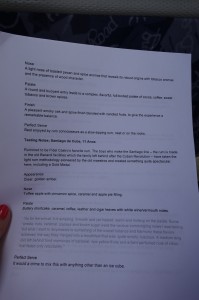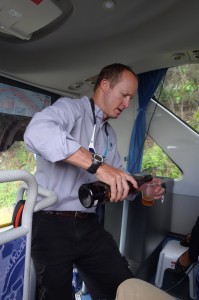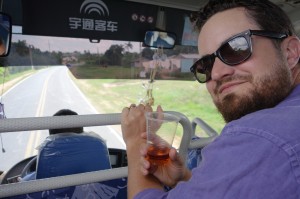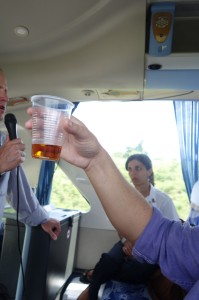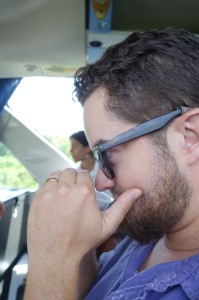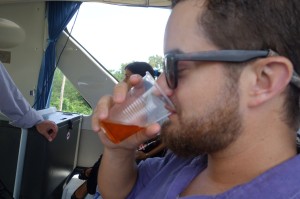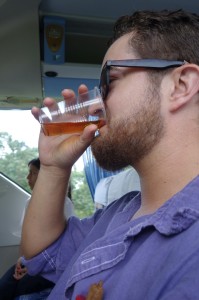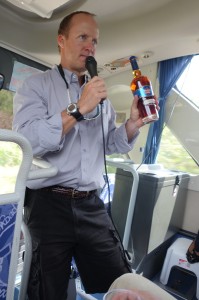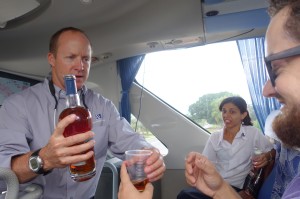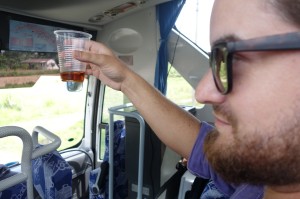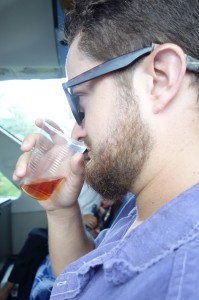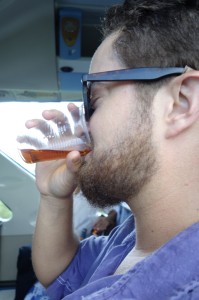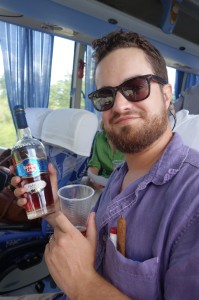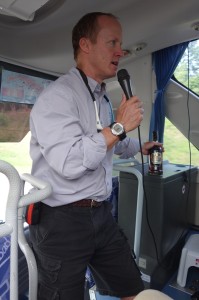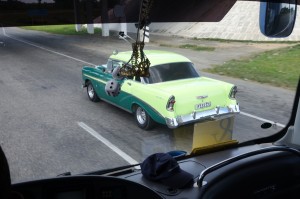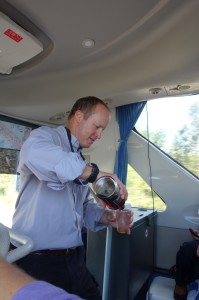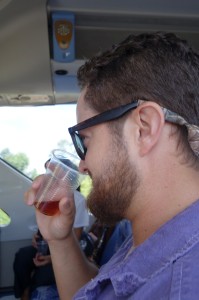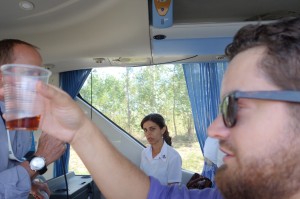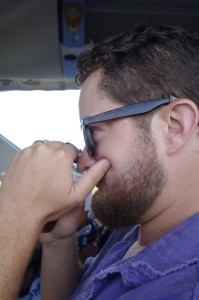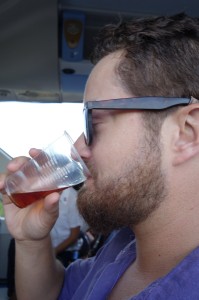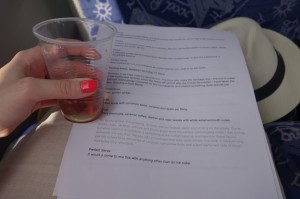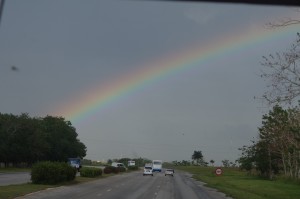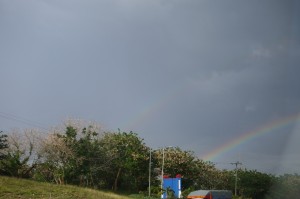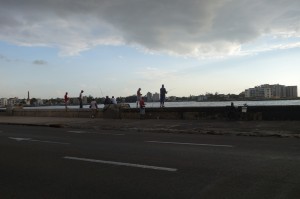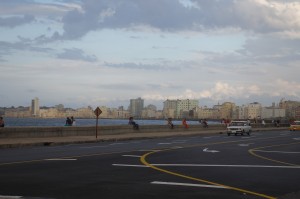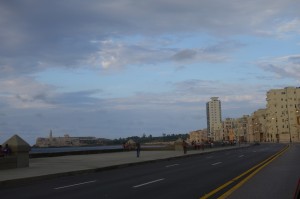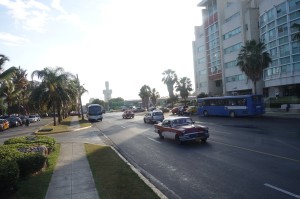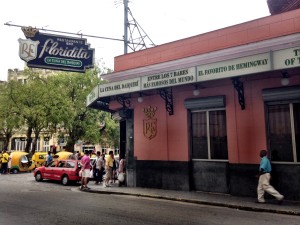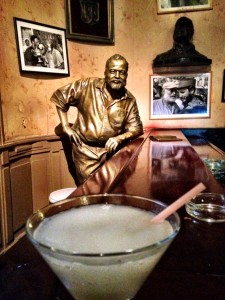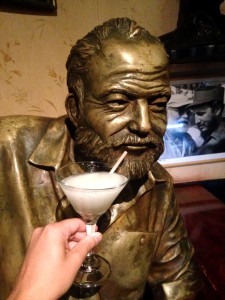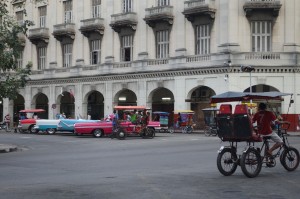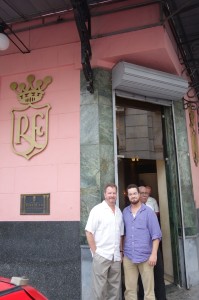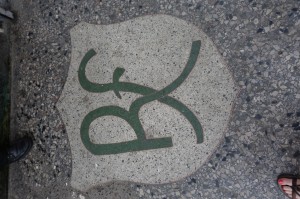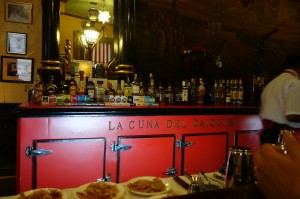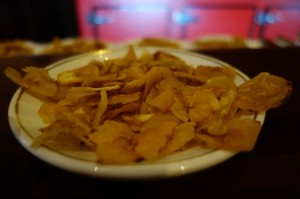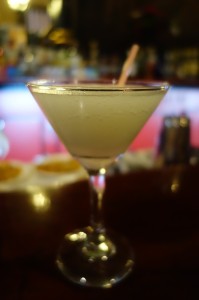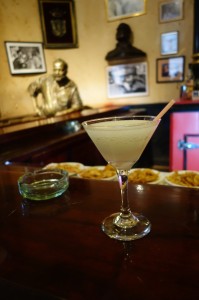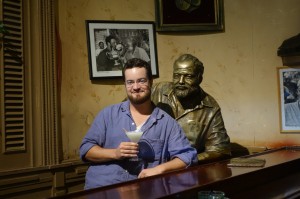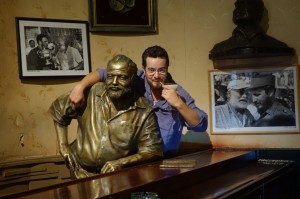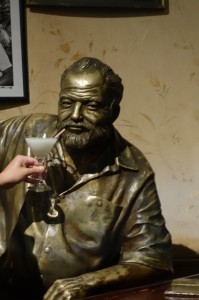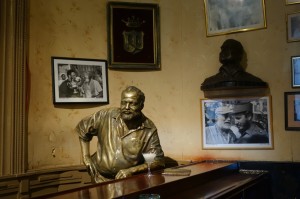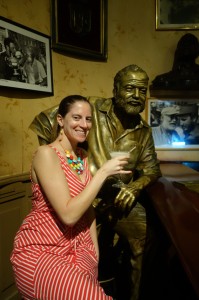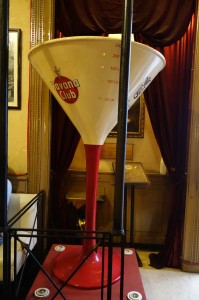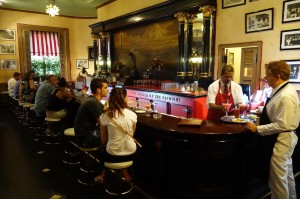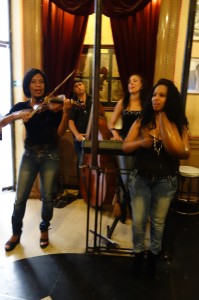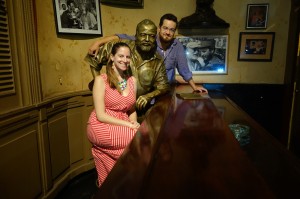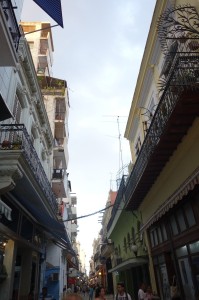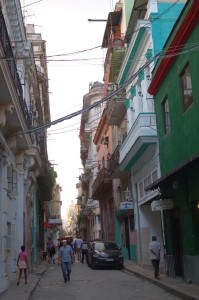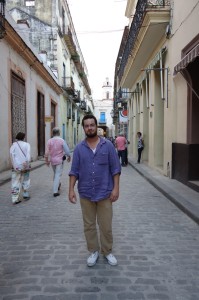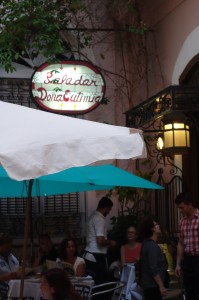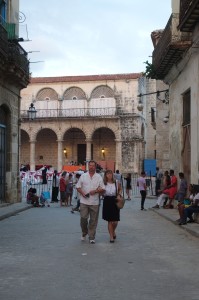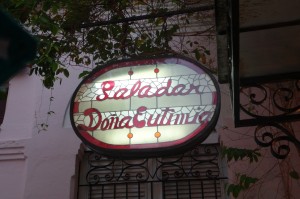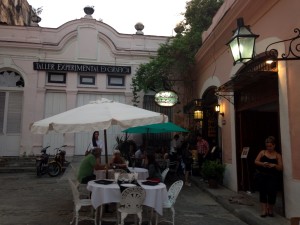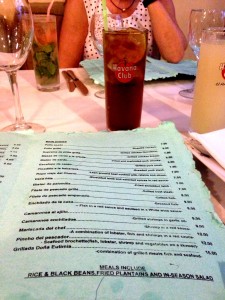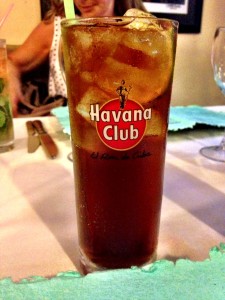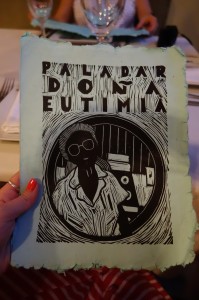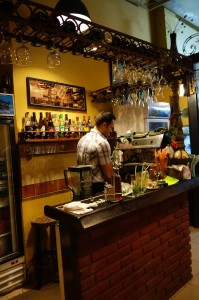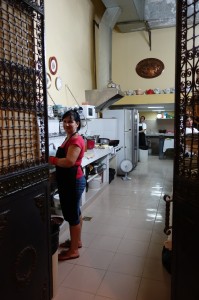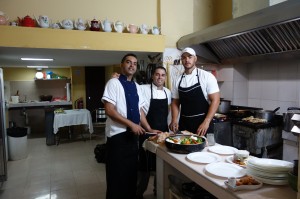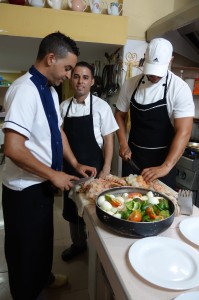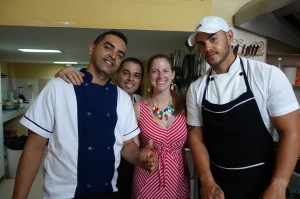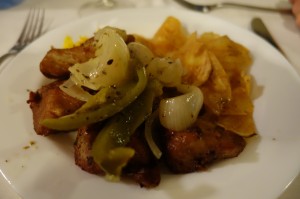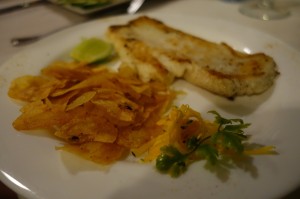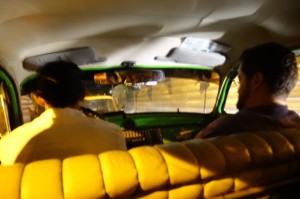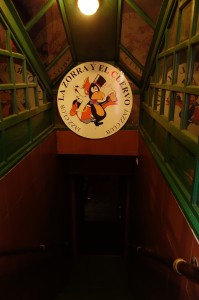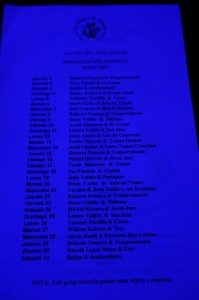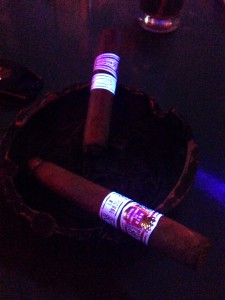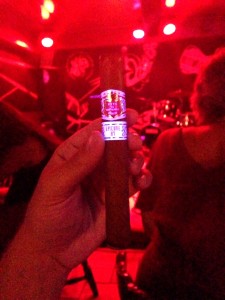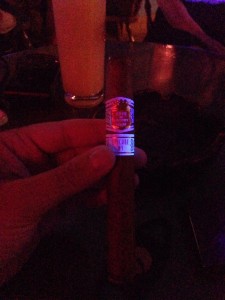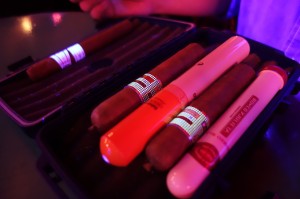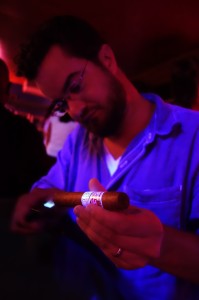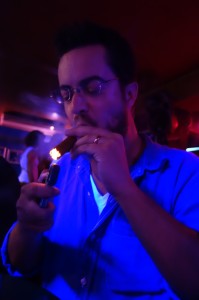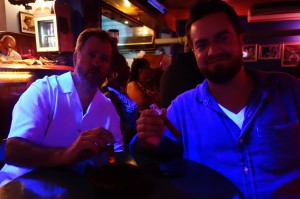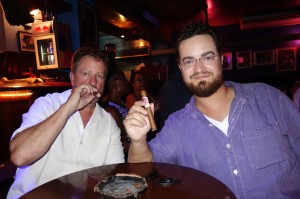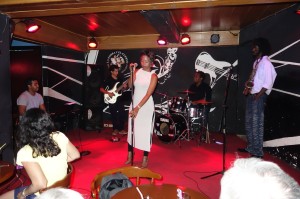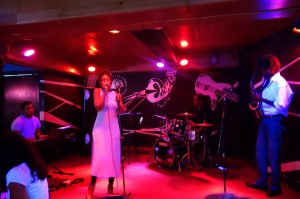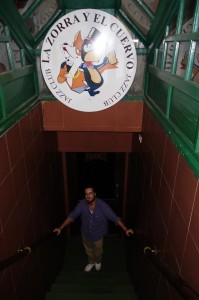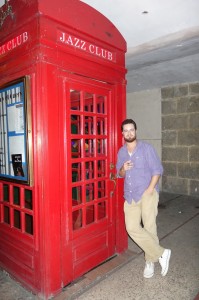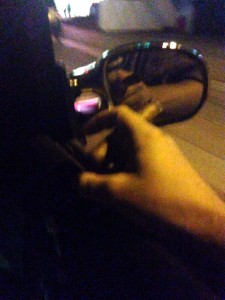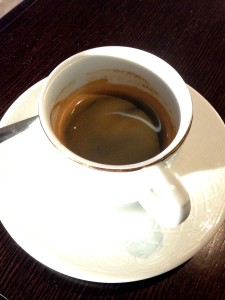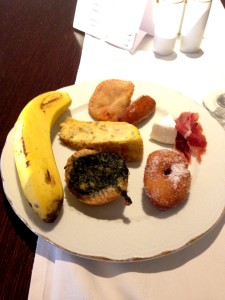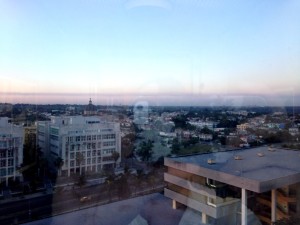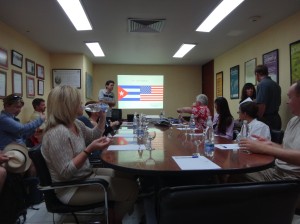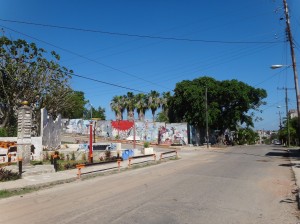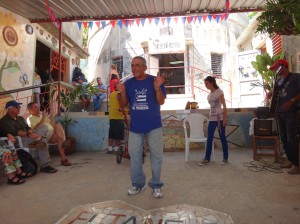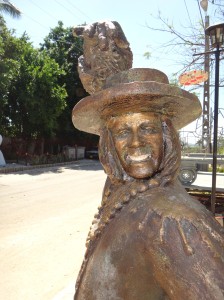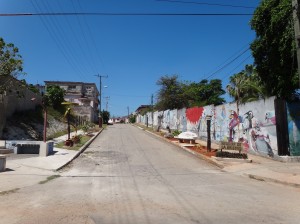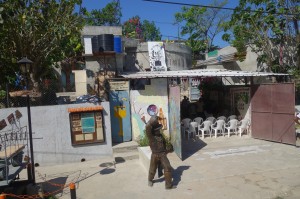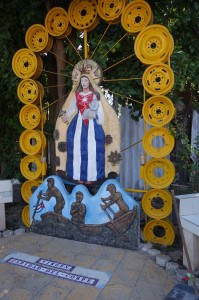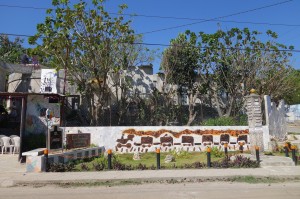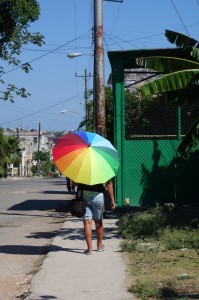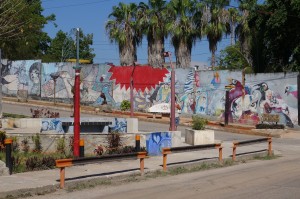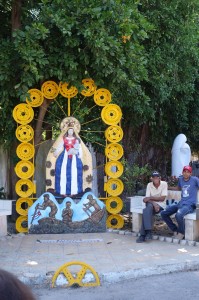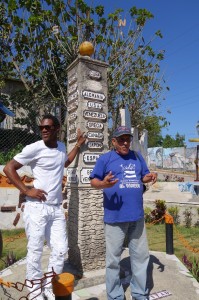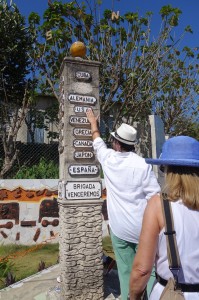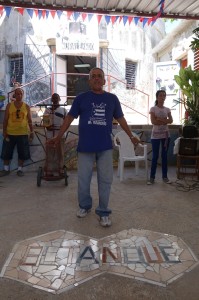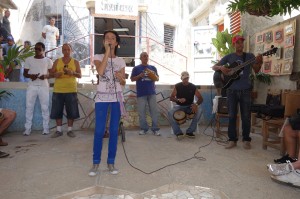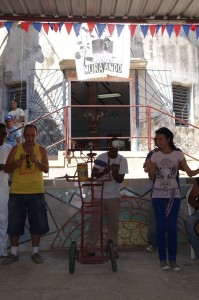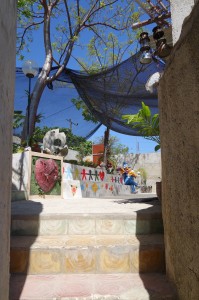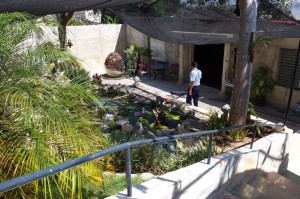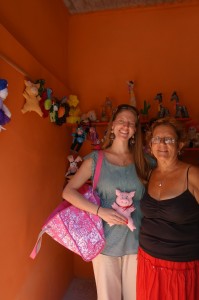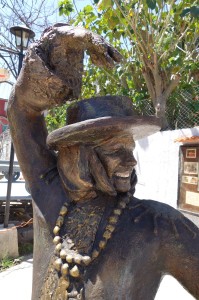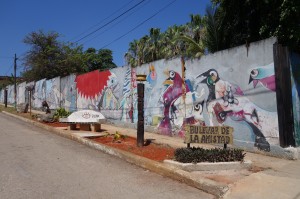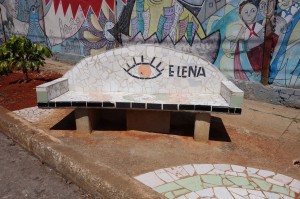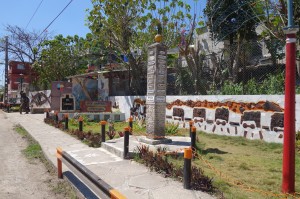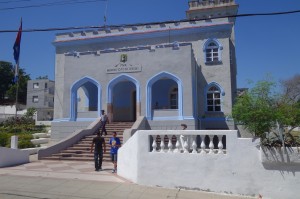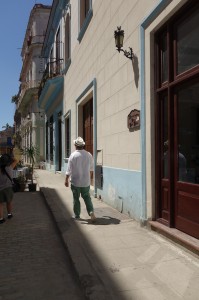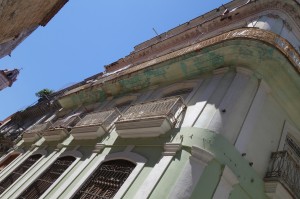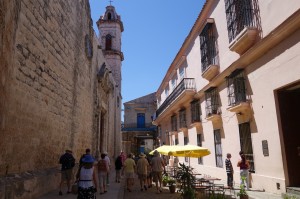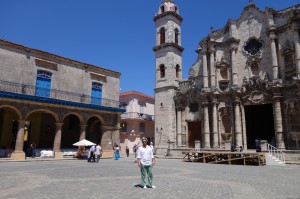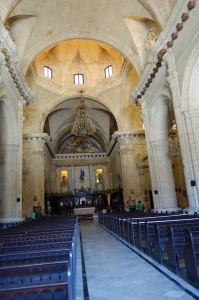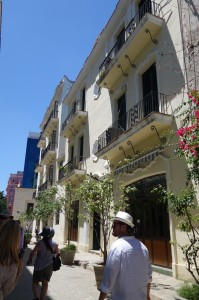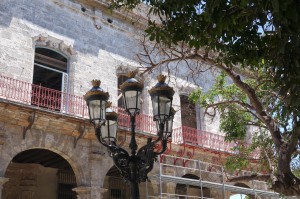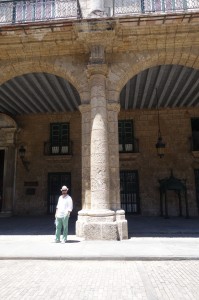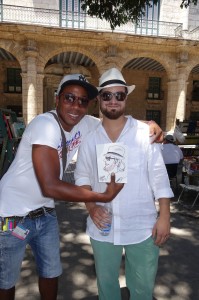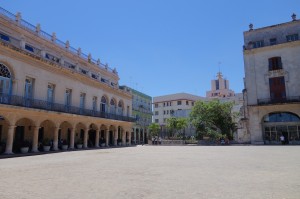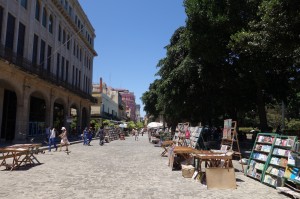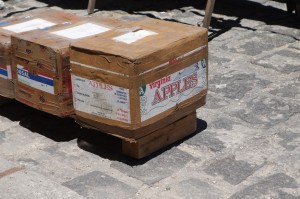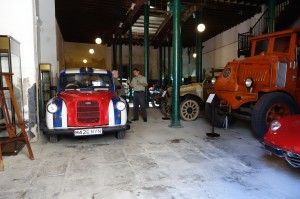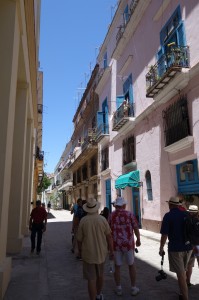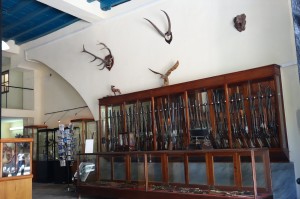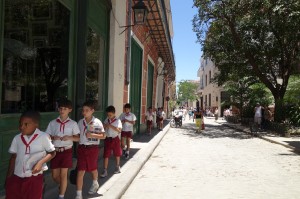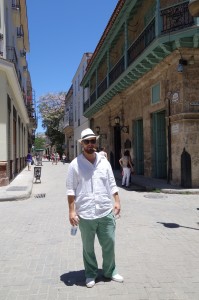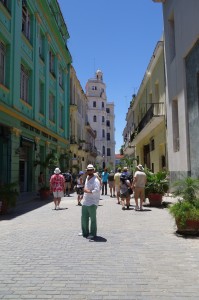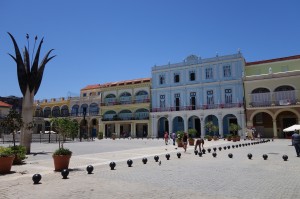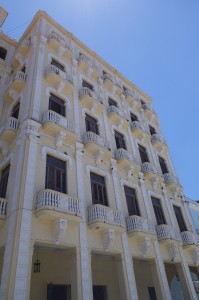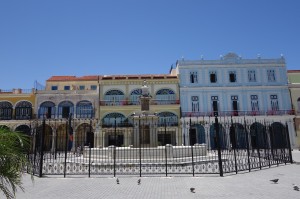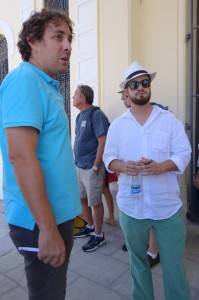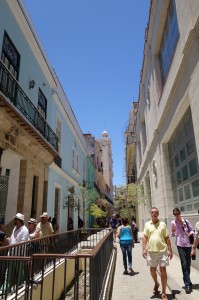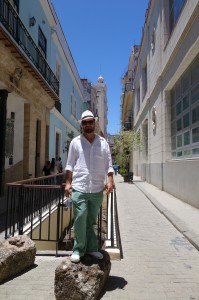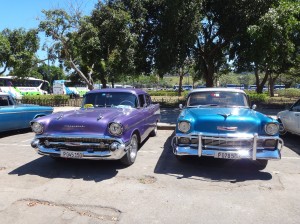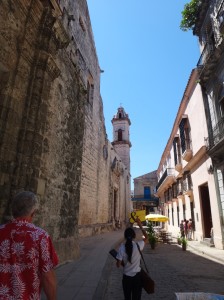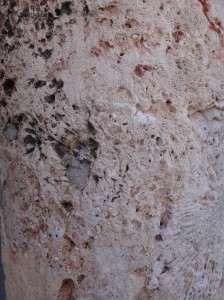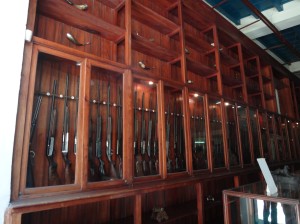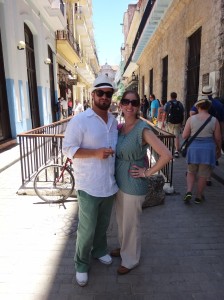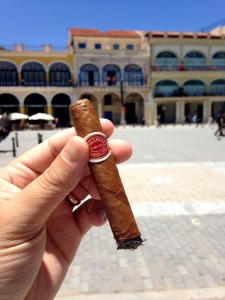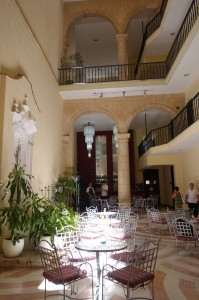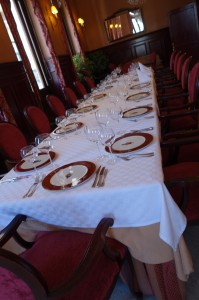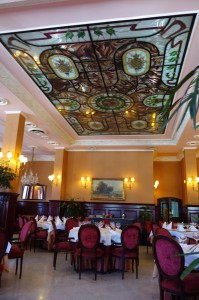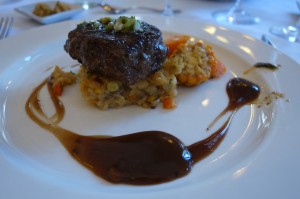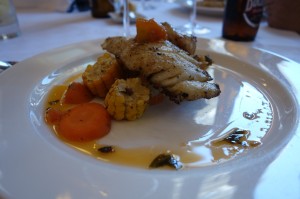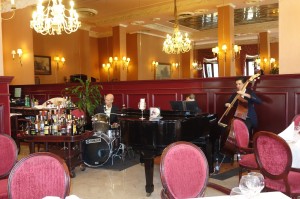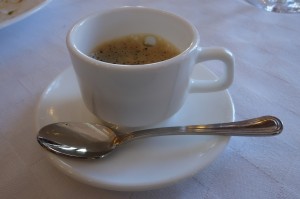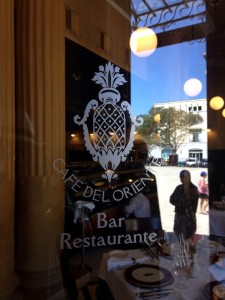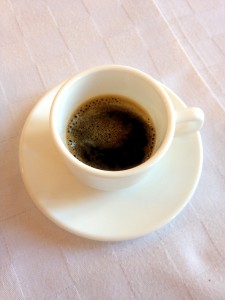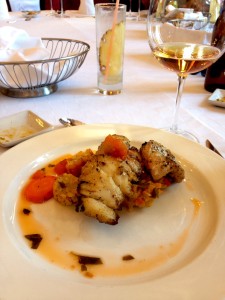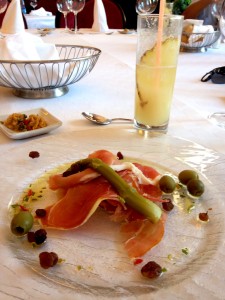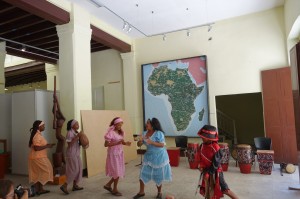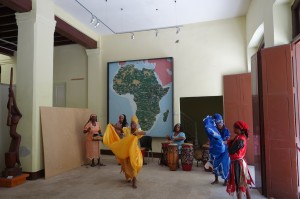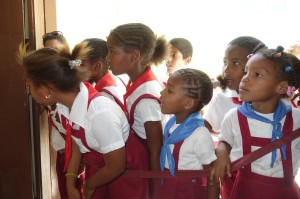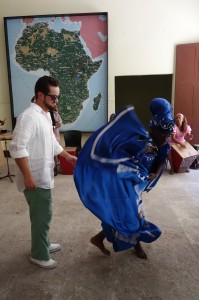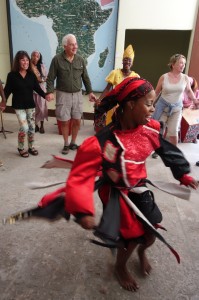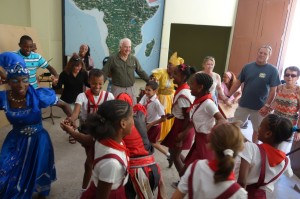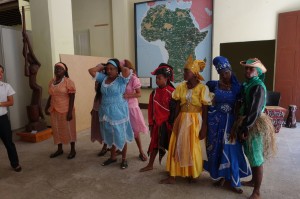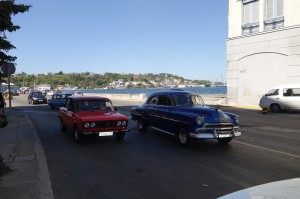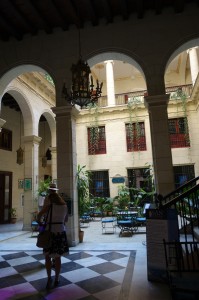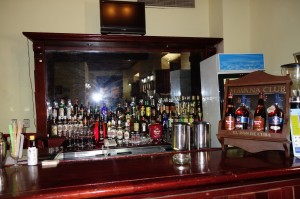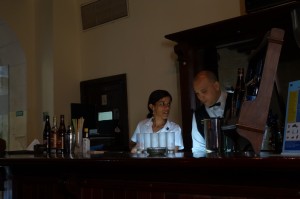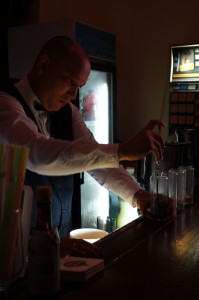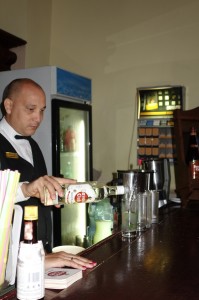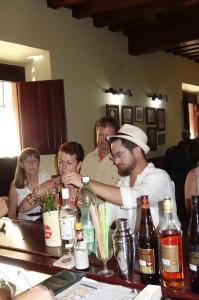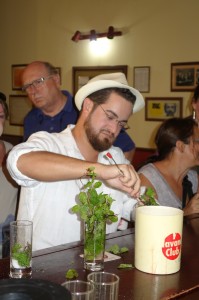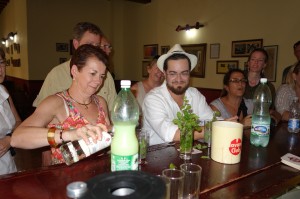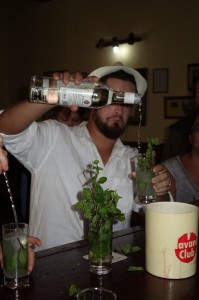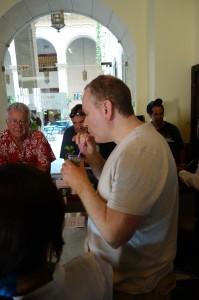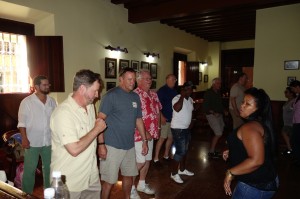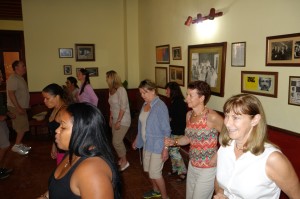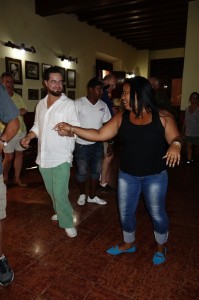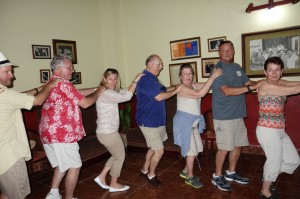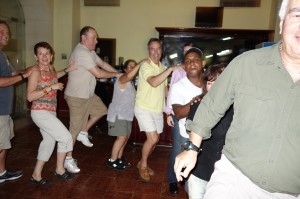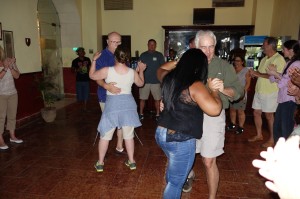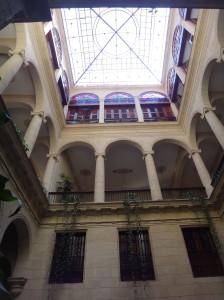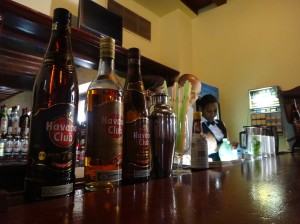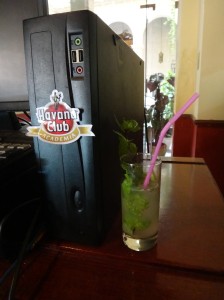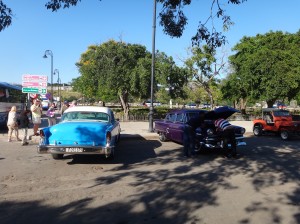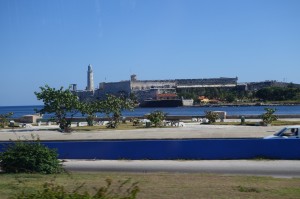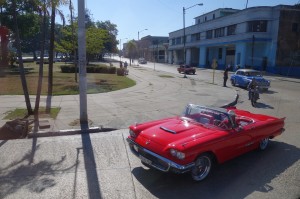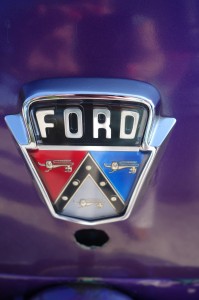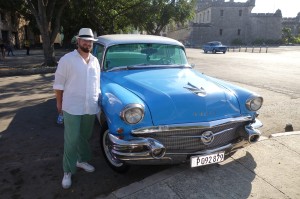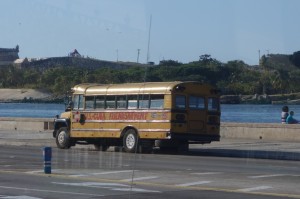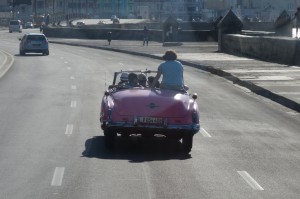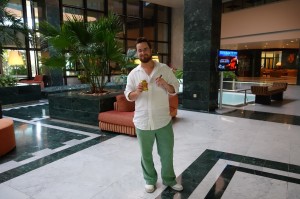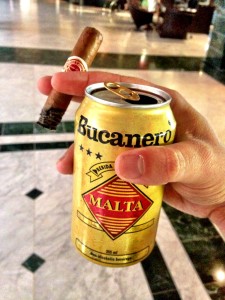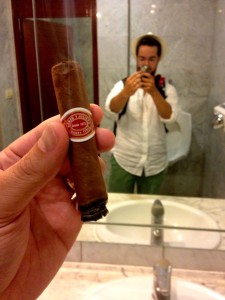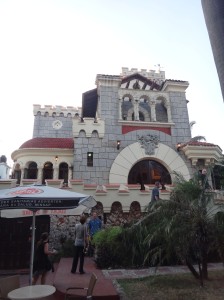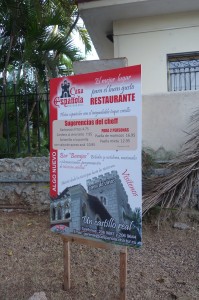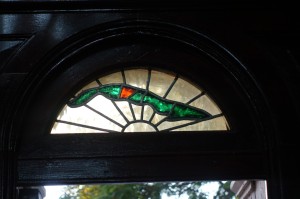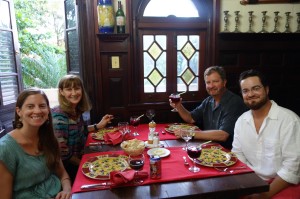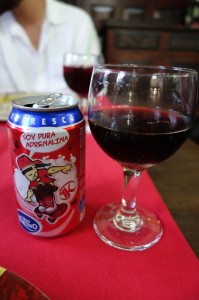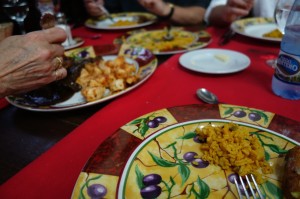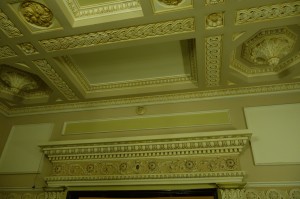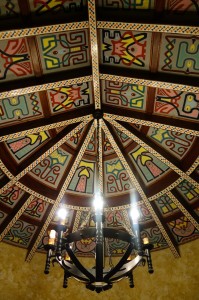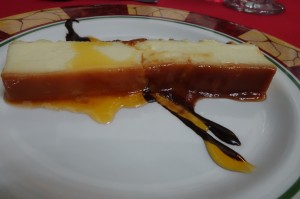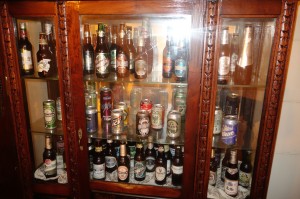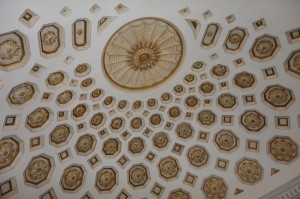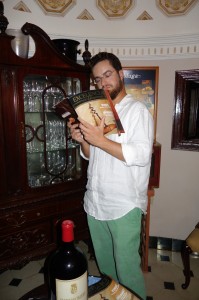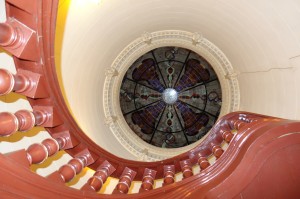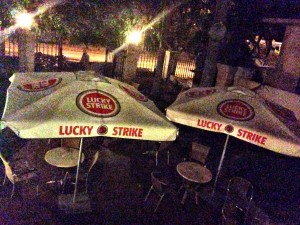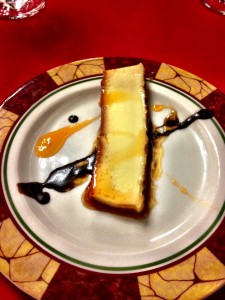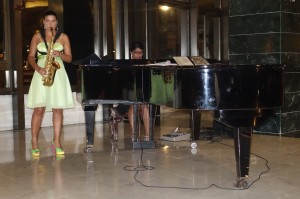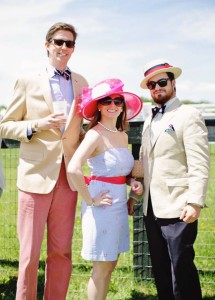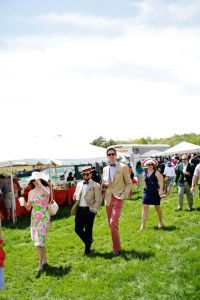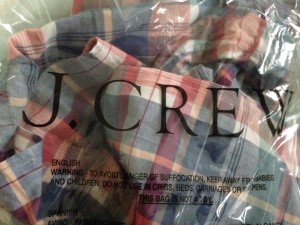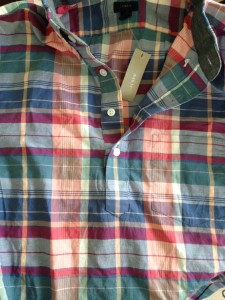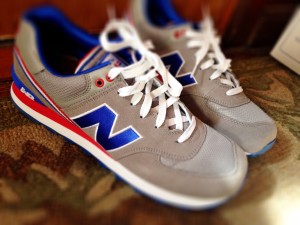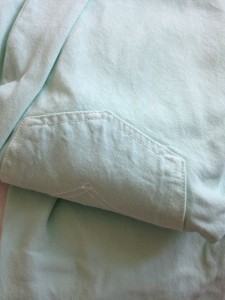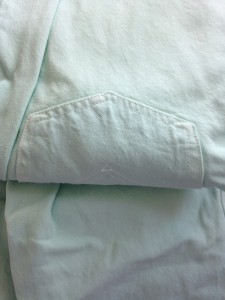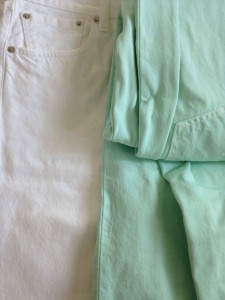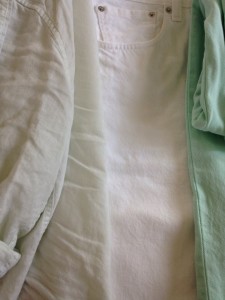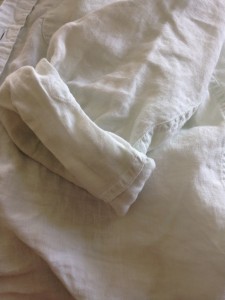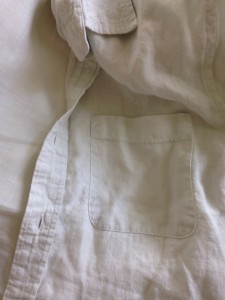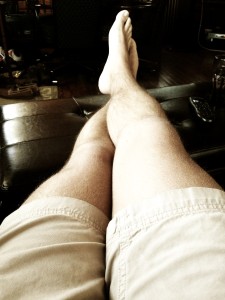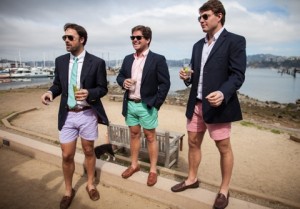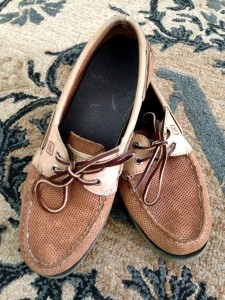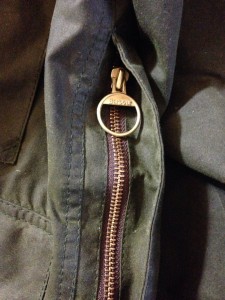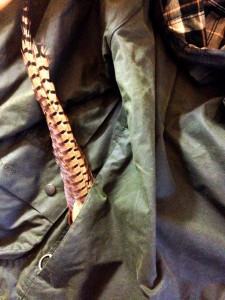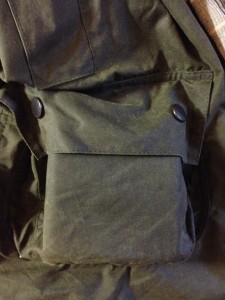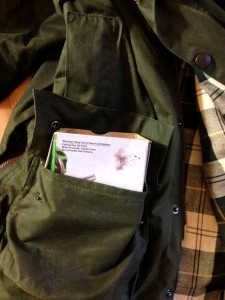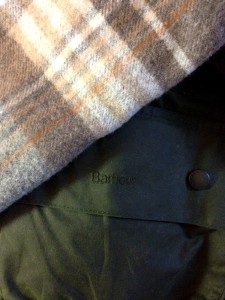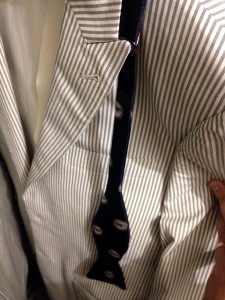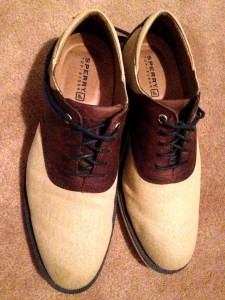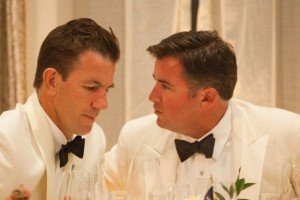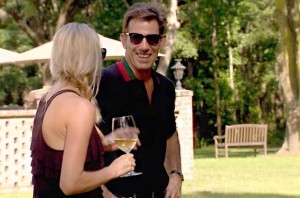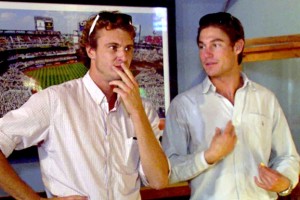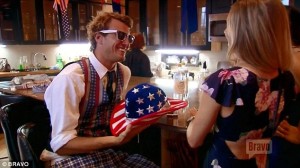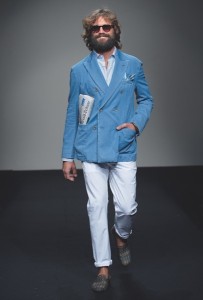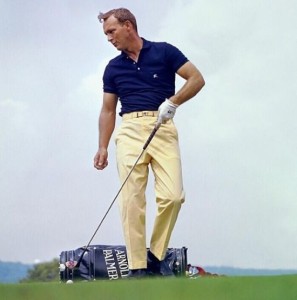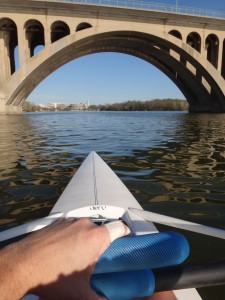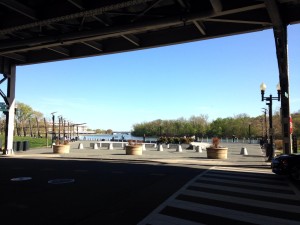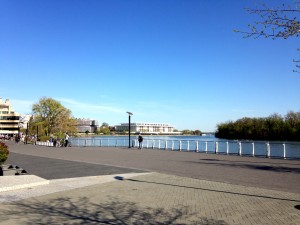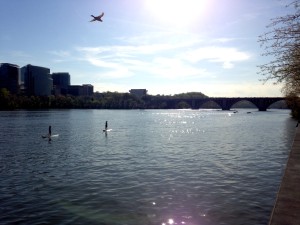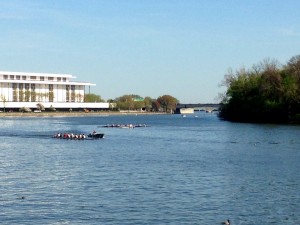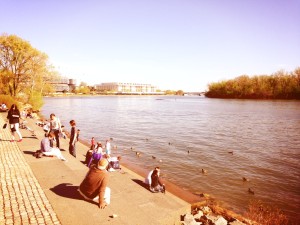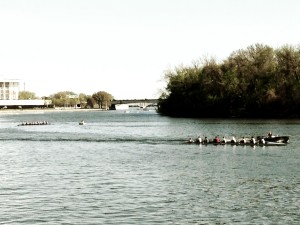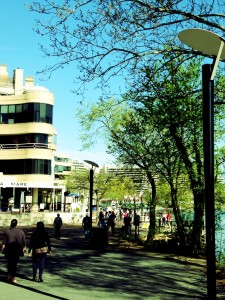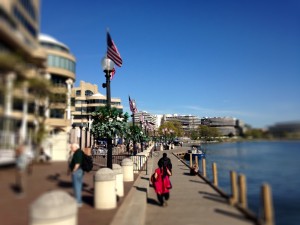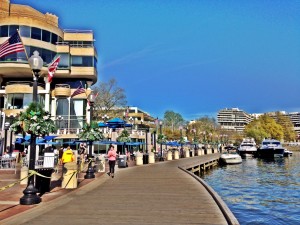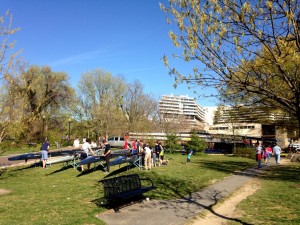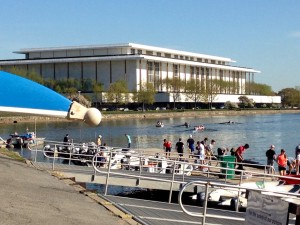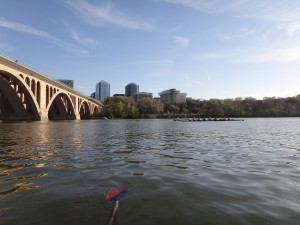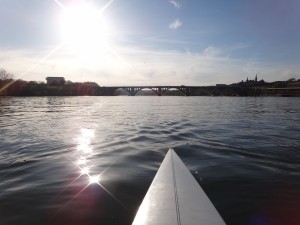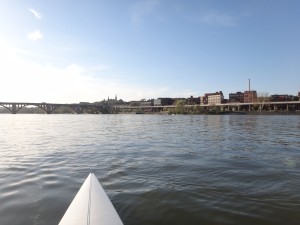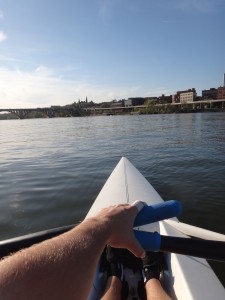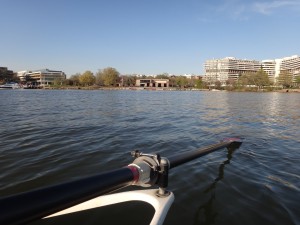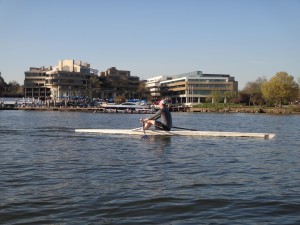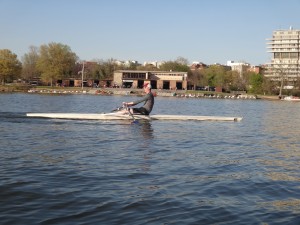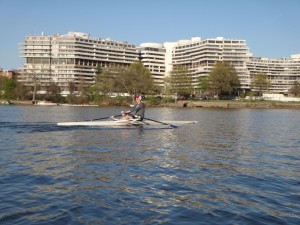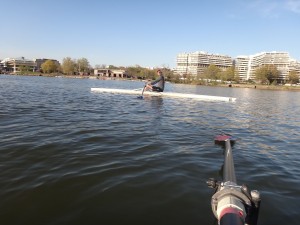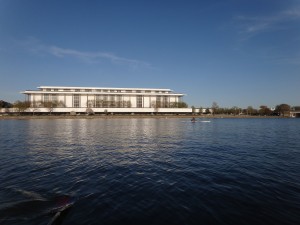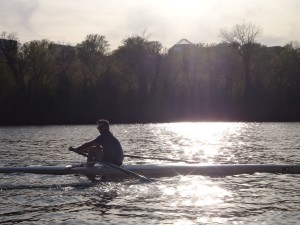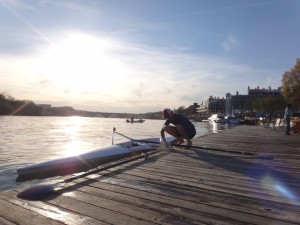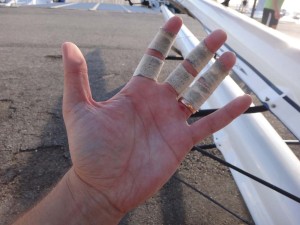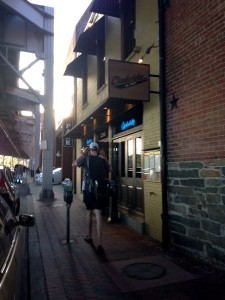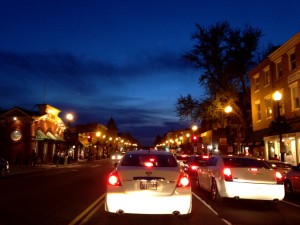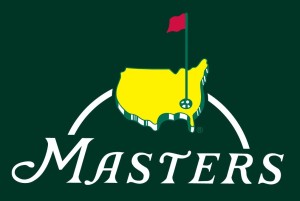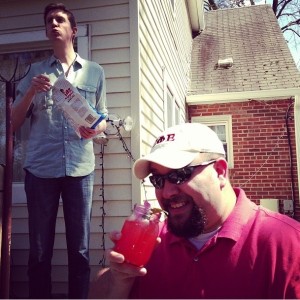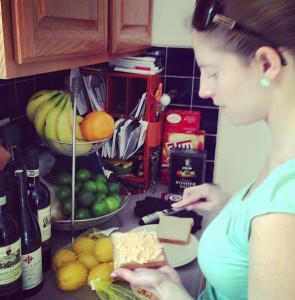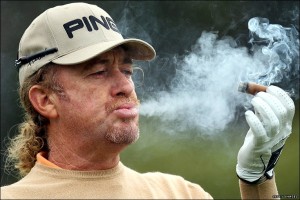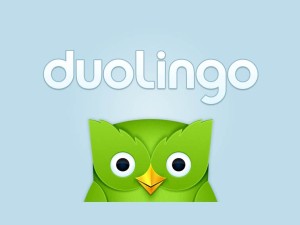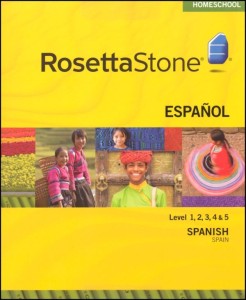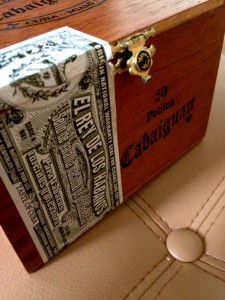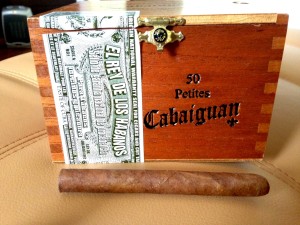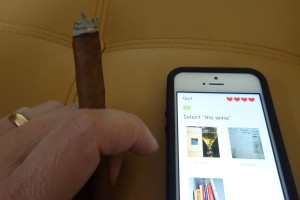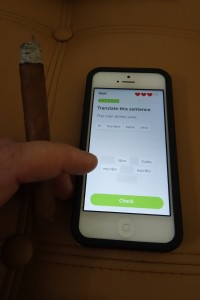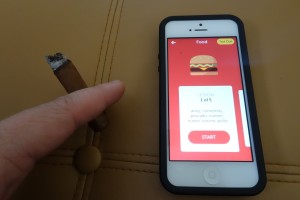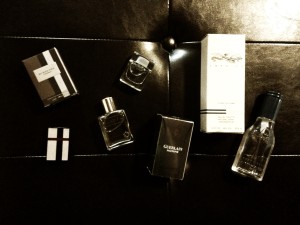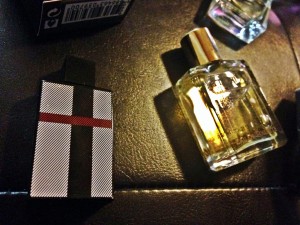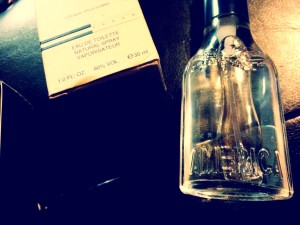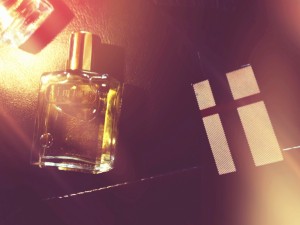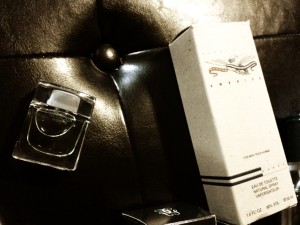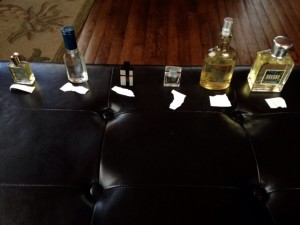Cuba, A&K P2P, Post #6
Today we headed to Las Terrazas, a UNESCO Biosphere reserve, that was once stripped of trees for farming, but is now reforested and rich in biodiversity. We were greeted with a welcome cocktail, and some fantastic music. These guys were jamming out for just us, at say 9am-ish.
Our Cuban guide showed us a rationing card, and then we visited a bodega. In Cuba, supplies are still rationed, but a lot of what they need is now purchased in the free/black market. At this bodega, one shelf has regulated products, while the other has released/freed products. Sugar is an example of a regulated product, or one that is still rationed, while beer is available, but at cost. The rationed items did have a, “symbolic cost” (very low), which basically is the government’s way of telling its people that the items have value and cost, while still making them available to all. There was a time when rum and tobacco were rationed, but now its pretty much the bare necessities. As you can see on the card, you can get fish and eggs too.
The we got to visit Las Terrazas’ community pharmacy, dentist, and doctor. Cuba has a multi-tiered medical system, and this local doctor would more than likely be one’s first stop.
We also got to visit the local daycare/preschool, and leave some gifts for the children.
At Cafe de Maria, we were given several exotic choices of coffee drinks, and seating in a beautiful venue. I had a coffee with a local liquor, while my wife had an iced coffee with local spices. Both were amazing. A fellow traveler asked for, “descafeinado.” The waiter looked at her incredulously, smiled, and said, “Only good coffee in Cuba.” I was amused, I don’t think she was.
We got to see Lester Campos’s art studio, and the home of Polo Montanez. Then we enjoyed a nice lunch and some music.
My wife played the pregnancy card and got two desserts. Then we headed back to the hotel in Havana. We had a little free time, so I lit up a Hoyo Epicure No. 2, and then we decided to get some sun. The cigar was the perfect pool and pool bar smoke, and we enjoyed a short respite from our busy itinerary.
That evening we went up the road to the home and studio of Jose Fuster, the world renowned Cuban painter and ceramicist. He and his son gave us a tour of the property. Then we sat down to dinner at Fuster’s house, and were serenaded by Fuster himself. He also predicted that my first child will be a masculine child…
We got back to the hotel happy, full, but exhausted. An a cappella group that had just got back from a tour ending in San Francisco was performing, and they were quite good. I lit up a Partagas serie D No. 4. It was a rich, spicy, and flavorful way to end the night. We managed to call a few friends on facetime via the hotel wifi. I nubbed the cigar, finished my Cuba libre, and we called it a night. What an amazing day.
by rsiv withWarning: count(): Parameter must be an array or an object that implements Countable in /home/bonviv6/public_html/wp-includes/class-wp-comment-query.php on line 405
Warning: count(): Parameter must be an array or an object that implements Countable in /home/bonviv6/public_html/wp-includes/class-wp-comment-query.php on line 405
no comments yet
Cuba, A&K P2P, Post #5
Today we explored Pinar Del Rio and Vinales. The day started out just like any other, amazing breakfast, packed the essentials (rum and cigars), and headed down. However, I did wake to a nice birthday note from our guide. It was very thoughtful, and got the day off on the right note.
We got on the bus and headed out through Miramar, which has lots of beautiful old houses, embassies, and ambassadors’ homes. We had a quick pit stop.
Then we continued into the countryside, and on to the Donatien cigar factory. Photography was not allowed inside. I assume this is because the trained eye might be able to ascertain too much information about brand specific blends, etc. Fortunately, a fellow A&K traveler, Lynn, snapped a few outside and in their cigar store.
I asked about some Trinidad Fundadores, but they were out. I figured you only live once, so I asked about their Behike’s. The joy you see on my face is mostly about the price. I think it was about 20 CUCs per. I was shocked. I picked up a few. You can see another of my selections in my hand, HU Mag 46. After stocking up, we headed out to the country, and had one more pit stop.
After the respite, we headed to Casa de Confianza in Vinales. Its an organic farm and restaurant perched high on a hill overlooking the landscape. We had a truely epic lunch on a trip full of amazing lunches. I expected mostly vegatables, but it turned out to be a full pig roast. Words don’t begin to do this lunch justice, and the pictures barely begin to tell the story.
I pulled out my trusty SpanishDict app, and then said, “Senior, la oreja, por favor.” He cut me the fattiest most delicious piece of meat. I had already had some cheek, and this might have been better. Crispy, oily, fatty, and amazing. The Cubans thought it was awesome that a gringo ate the ear. My fellow traveling companions were less impressed. After a huge and amazing meal, way too much rum, and a great time, we checked out the kitchen. How they got all that incredible food out of that sparse kitchen is beyond me. Very impressive. Then we took a tour of the organic farm. It was an interesting tour. They said that organic farming used to be the only option available. Now its more of a tourism decision, as Cubans care more about size and cost when it comes to produce.
Then it was time for the tobacco farm. We got to meet Benito and his family. He was quite a character. The tobacco had already been harvested, and corn was in its place, so we went into the barn.
Benito asked if there were any cigar smokers in the group. The group yelled my name in unison (guess I had a reputation). Benito rolled me the pure ligero cigars he enjoys, and I lit up. Very flavorful, and very intense. Also, very young tasting, but a great experience none the less. Then he passed out some more home rolled cigars to the rest of the group that had some more age. I had one of these later, and it was also very enjoyable. Benito put out some drinks, and we got to talk. I showed him a picture of my tobacco on my phone, and he was very excited to talk tobacco with me. It was a great stop, and while most people probably had their fill, I could have stayed all day. Back on the bus, we got a surprise for the long ride home.
Havana Club Anejo Especial was first. This was what A&K/the Melia gave us as a welcome gift, and I was carrying around. It was quite good, but it was no HC 7, which was next. Then we moved on to my favorite HC Seleccion de Maestros. After that, Santiago de Cuba as the grand finale. Very very good. But not my favorite (but my 2nd favorite). The rum tasting was a great idea, and made the time fly. I had already been over served at lunch (by yours truly), and notice the amount of rum in my cup in the pictures. Apparently, I was drinking for three, since our guide knew my pregnant wife was not imbibing, and my cup always seemed to be fullest (thanks again Ridlon). We enjoyed the scenery going into Havana (including the double rainbow), and soon, we were back (thanks again, Havi).
That night, we had dinner on our own. Our guides had made us reservations at Dona Eutimia. We took a cab over to La Floridita, of Hemingway fame, and grabbed some pre-dinner daiquiris.
I was in a frat. I’ve been known to enjoy a drink or two. After La Floridita, I was feeling it. Not so much drunk, but worn out and exhausted. The promoters trying to entice you into their paladars did not help while we took a beautiful walk down Calle Obispo. I’ve heard Hemingway still holds the record for Papa Doble’s, 17 in one night, corroborated by his letters to Harvey Breit, letters of those that were with him, and several articles that can be found online. The modern doble reportedly contains 2 jiggers, or 3 ounces of rum. At the time, Hemingway says it was 4 ounces, and that he had 68 ounces total that day. I like to imagine Hemingway had felt about the way I did wandering down Obispo, which he also loved to do. It was a great moment, and a lovely walk (for more info, and the papa doble recipe, check out to have and have another). After dinner, we hoped an old cab and headed to La Zorra Y El Cuervo, a highly recommended jazz bar.
After finding the old phone booth, which is its entrance, we descended into the smokey lounge, paid a cover, and got a table. I lit up a Hoyo de Monterrey Epicure No. 1, and my dad lit up a No. 2 (my current favorite cigar, bar none). It was an unforgettable day, and an unforgettable night. This was easily one of the best days of my life.
by rsiv withWarning: count(): Parameter must be an array or an object that implements Countable in /home/bonviv6/public_html/wp-includes/class-wp-comment-query.php on line 405
Warning: count(): Parameter must be an array or an object that implements Countable in /home/bonviv6/public_html/wp-includes/class-wp-comment-query.php on line 405
no comments yet
Cuba, A&K P2P, Post #4
Day 4 in Cuba started out with a buffet, and amazing cafe. After a great meal, we headed down to a conference room in the hotel. We met with a former Cuban Foreign Services Scholar, who brought the group up to date on Cuba – US relations from the colonial period to present times. I had just read Bacardi and the Long Fight for Cuba, which is as much a history of Cuba as the Bacardi family and company, but from a capitalist perspective, so it was interesting to notice the discrepancies between the two accounts. For instance, the speaker implied that business owners fled the country out of guilt/fear prior to the revolution, and failed to talk about the confiscation of their assets. However, when directly asked, he provided an account that was more inline with what I had read in the book. There was lots of talk about, “Terrorist groups in Florida.” He also said that Cuba was not changing from Socialism to Capitalism, but something new. He said, “Cuba has to adapt.” He thought that it would be a slow process, but Cuba has to change. A member of our group suggested that when the embargo is lifted, people will get rich, everything socially and otherwise will change. He presenter said, “we accept this challenge…we have been preparing for this.” Later he added, “Cubans need to work harder to have more.” “We are going to face new realities, and I’m optimistic.” The presenter kept talking about Cuba embracing at least some degree of capitalism, but he never once used the word capitalism unless someone else used said word in their question. I got the impression that Cuba will try to hold on to its socialist ideals for quite some time. I think that longer term, it will likely look more like Canada, or perhaps a Sweden. Controlled capitalist, but with strong social concern, for instance socialized medicine, nationalized industries, etc. That said, it may be hard to resist the fast money that American tourism will offer.
After the foreign services presentation, we got on the bus. After hearing that we had another giant of a day, our American guide introduced our Cuban guide. “She’s your guide, shes our guide, shes Ms. Cu-baaa!” Nilda told us about the day’s activities as we headed to the Muraleando neighborhood community project. The manager of this project was very genuine and very enthusiastic. His passion was contagious. He described some of their art as, “tangible poetry.” He definitely did not need a translator. The project is called El Tanque, because they petitioned the government to take an old water tank in a trash heap, and turn it into an art gallery. They cleared out a junkyard, and now they have a beautiful community center. They’ve also beautified and improved the entire neighborhood. The female singer pictured below had just won a caribbean talent show. I have her CD, so I’ll try to update this post with more details about her later. The statue is of a local character, who we got to meet. The teeth are real dentures. The bench is dedicated to an old woman who used to sit there daily, waiting on her love (it is assumed that she was referring to a potential future love).
After saying our goodbyes, we took a walking tour though Old Havana with a local architect. Both he, and his wife, were architects in Havana trying to save and restore old buildings, so it was a very enjoyable and informative walk. It was also our first chance to wander the streets, so even without the great commentary, it would have been a great time. I don’t recall the architect’s name, but I thought of him as a Javier (Bardem), perhaps you can see why.
First, notice the box of Virginia apples. I do know that they don’t grow apples on Cuba, so perhaps it was some kind of aid? I didn’t get to ask about it, as that pic was taken during our free time wandering. Next, notice the shotguns. Does your grandpa ever tell you that Obama/Clinton/etc is going to take away your guns? In Cuba, they really did. This museum displays the shotguns confiscated by the government. I saw a bunch of Browning A-5s. I was with our Cuban guide at this point, who is from Pinar Del Rio (the country), which makes her a guajira (country girl). I thought she might know about hunting. She said that it is difficult to get a permit to own a shotgun, but some Cubans do. However, most harvesting, of say boars, is done by trapping. The interwebs shows me that there is quail hunting in Cuba, but I couldn’t tell you if Cubans are allowed to do it. The architect was particularly candid about his thoughts on Cuba. He said his grandparents were for the revolution, when it was still about getting rid of Batista. When it became communist later, they regretted it, as they were a wealthy family. Eventually, his grandfather took his own life. The architect also said that he would not be able to live as well as he does without his two brothers sending clothes and money from Miami. He was a very interesting guy, and I wish we had more time with him. The picture of stone above is so you can see the coral in it. The cigar is a Romeo y Julieta #2. These were my walking around sticks while I was in Cuba, as they were 3.4 CUCs (less than $4 American), and easily found in Tubos for portability. I never had a draw or construction problem, and the flavor was great. Maybe a little one dimensional, but they were prefect for my purposes. I really just grabbed a few by chance, but ended up having one whenever I had 30-45 minutes.
We hit Cafe Del Oriente for lunch. Apparently, its the place to see and be seen, as the Castros can often be seen there, and other high level officials. The welcome cocktails and food were great, but the atmosphere and music were just incredible. It was a nice respite from the heat and the walk.
After lunch, we had a tour of Casa De Africa, with an Afro-Cuban religions specialist, and then saw a show. The actors were excellent, and as always, we were blown away by the quality of the production, and that it was just for our small group. However, some school children wandered over, as the museum is right on the street, and they joined in the dancing. The dancer in blue is the Yorùbán/Santerían orisha Yemaja. I thought she stole the show. She pulled me up to dance with her. My wife thought it was fitting as she is the patron deity of women, especially pregnant women. After Casa De Africa, we headed to a hotel for lessons in making mojitos, and dancing salsa.
I lost the mojito contest, but I had lots of rum, and maybe instead of the loser, we can say I was runner up. Then we learned Cuban style salsa, which involves a different count and a post. Or at least thats what I remember. I’m not a great dancer, but I learned the basics, and had a great time.
We drove back to the hotel along the Malecon, and with a few hours to burn, I opted for another Romeo y Julieta #2. I also tried Bucanero Malta, which at first I thought was malt liquor, but when I saw our bus driver Havi drinking it, inquired, and found out its more like sugarcane root beer. It had an interesting and very unique flavor I can’t quite describe. I thought it went well with the cigar, and was a welcome change of pace from the 14 or so rum drinks I had that day. I also threw in a bonus bathroom cigar selfie. How often does one get to enjoy a bathroom cigar?
We had dinner at Cafe Espanola. It was a good meal in a very interesting place. Afterwards, we enjoyed some jazz in the lobby, and called it a night.
by rsiv withWarning: count(): Parameter must be an array or an object that implements Countable in /home/bonviv6/public_html/wp-includes/class-wp-comment-query.php on line 405
Warning: count(): Parameter must be an array or an object that implements Countable in /home/bonviv6/public_html/wp-includes/class-wp-comment-query.php on line 405
no comments yet
First row of spring, Thompson Boat Center, sculling in DC, Chadwicks of Georgetown
The water temp finally rose, the weather was good, and my buddy RP and I were able to get over to Georgetown today for the first row of the season.
I walked down to Thompson Boat Center, and saw my old High School team. We grabbed oars, boats, and got on the water. It was a beautiful day. Despite the good weather, the water probably wasn’t particularly warm, so we opted for a more stable scull.
I brought a waterproof camera out for the first time. Its a bit hard to keep upright, stay out of other boats’ way, and snap pictures, but I think I got some good ones. In the background just below, you can see the boat house, the Watergate hotel, and the Kennedy Center. Up above, you can see the Rosslyn skyline, the old port of Georgetown, the National Cathedral, Key Bridge, and some of Georgetown University. Just behind me further down in the photos, is Theodore Roosevelt Island. Next time I’ll try to get some better pics of the island, Roosevelt bridge, the three sisters, the Lincoln Memorial, etc.
My hands held up pretty well, except I think I might need to lose the wedding ring next time.
After sculling, we went to Chadwicks for half priced burgers and beers. We celebrated the first row of the season, and made plans for next week. Hope to see y’all out there.
For some more rowing posts, click here, and here.
by rsiv withWarning: count(): Parameter must be an array or an object that implements Countable in /home/bonviv6/public_html/wp-includes/class-wp-comment-query.php on line 405
Warning: count(): Parameter must be an array or an object that implements Countable in /home/bonviv6/public_html/wp-includes/class-wp-comment-query.php on line 405
no comments yet
The Masters (online schedule), Azalea Cocktails, Pimento Cheese
Tuesday, live coverage at the range begins on NBC Sports LiveExtra at 9am! Part 3 contest Wednesday at 3 on Masters.com. After that, there is pretty much full time coverage online. NBC Sports LiveExtra has even more live coverage. The first round starts Thursday, fourth round is Sunday. Since I won’t be around a computer or TV for the main event, I’ll post a few pics from last year’s party, and simply remind y’all to get your Azalea Cocktails ingredients ready, and pimento cheese made.
Pictured: Big CW enjoying an Azalea cocktail, complete with Azalea garnish from the back yard. The wife getting started on the Pimento cheese sandwiches (yes, we also had ritz crackers).
For more Masters blog coverage, check out RedClaySoul. He’s already two Masters posts in, and there will definitely be more to come. I look forward to the RCS Masters coverage each year.
Enjoy the Masters everyone. ¡Viva El Pato, y Jiménez !
by rsiv withWarning: count(): Parameter must be an array or an object that implements Countable in /home/bonviv6/public_html/wp-includes/class-wp-comment-query.php on line 405
Warning: count(): Parameter must be an array or an object that implements Countable in /home/bonviv6/public_html/wp-includes/class-wp-comment-query.php on line 405
no comments yet
The most interesting man in the (golf) world
I was doing a little reading about the upcoming Masters, and found an article from Cigar Aficionado about a golfer that my dad said I would like. The article is about Miguel Angel Jimenez, and how he appreciates the finer things in life. The article is very interesting, and it seems that Jimenez has a laid back demeanor that has led to a successful and satisfying life. I think a lot of people would be better off if they were a little more like Jimenez. As you can see in my previous post, I’ll be on a golf trip during The Masters, but when I do get to watch or check updates, I’ll be pulling for Jimenez to make the cut.
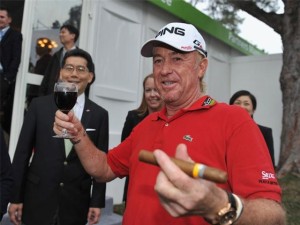
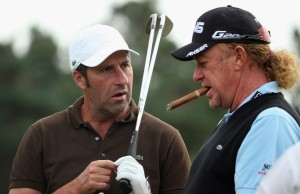
The article of full of gems, but I’ve provided some of the best parts below. However, I’d definitely check the article out in its entirety.
Hitting on the terrace of the Doral Country Club in Miami, a demitasse of espresso in one hand, a Vegas Robaina cigar in the other, Miguel Angel Jimenez could have been another spectator at the Cadillac World Golf Championship event. With his graying red ponytail and goatee, his little pot belly, his air of ethereal calm accentuated by the faint haze of smoke, the 47-year-old Spaniard struck a pose that belied the fire within—a fire that burns for golf, a fire that burns for life.
In the era of flat bellies and distant personalities, in the era defined by Tiger Woods, fitness trailers and prize money fit for a king, Miguel Angel Jimenez stands as his own man. Sure, he’ll hit balls before he plays. But he might also have a glass of wine. Sure, he’ll putt and chip. But he will certainly have a cup or two of espresso. Sure, he’s determined to be the best player he can be (with 18 European Tour victories), but he will also make sure he takes the time to savor his life.
“He’s a man of his own and everyone appreciates him,” says Chandler. “He lives his life and plays the game the way he wants to. He never rushes anything, he savors everything. He just inhales life, and he exudes it. I’ve never known someone more comfortable in his own skin than Miguel.”
In a sense, Miguel has become the perfect representation of the European Tour, which still has a more idiosyncratic atmosphere than its big brother, the PGA Tour, in the United States. He’s a true individual, with a very distinct character but that fits in well in Europe. He thinks nothing about having a glass of wine before he goes out to play. He will surely have wine at dinner and maybe a nice brandy or whisky.
Being a very proud Andalucian, you just had to figure his taste in wines would center around the Spanish greats, especially those from Rioja. Among his collection are Cirsion, Ardanza, Torre Muga, Marques de Riscal and Roda. He also has a number of wines from Ribera del Duero—Pesquera, Protos, Vegas Sicilia, Emilio Moro, Abadia Retuerta and Mauro.
Of course he also enjoys a glass of fino sherry and a number of rums including Barcelo Imperial, Brugal and Zacapa. A Bushmills 1608 Irish whiskey or a Lagavulin 16-Year-Old single malt Scotch whisky will do him quite well. “The Lagavulin is nice and smoky, goes great with a cigar,” says Jimenez, relishing the words in the manner he would relish the whisky and the cigar.
Then there are the cigars. Ah, yes, the cigars. He usually smokes four or five a day. He will smoke cigars during practice rounds and pro-ams, but he does not, he is careful to say, smoke during an official round. But you can bet a box of Montecristos that he will have one just before he tees off and just after he finishes, often lighting up before he signs his scorecard. He is such a fan of the Cuban cigars that he attended the 2010 Festival del Habanos.
“I love Cuban cigars. They have that spiciness and sweetness that are missing from some others,” he says. “One day at the festival I smoked nine cigars and I feel nothing in my throat. That is good cigars, no?”
He likes his cigars big and juicy, generally a 52 to 56 ring. His favorite is the Siglo VI and he regularly enjoys the Cohiba Behike, but really any Cuban cigar will do. He figures he has about 400 cigars in his humidors, and he can’t quash a wry grin when saying that he gets them at a bargain rate in Spain.
“It is relaxing to enjoy a good wine, a cigar, good food, a whisky,” he says. “You have to take the time to enjoy them. You cannot enjoy them if you rush them, no? You cannot enjoy life if you rush.”
by rsiv with
Warning: count(): Parameter must be an array or an object that implements Countable in /home/bonviv6/public_html/wp-includes/class-wp-comment-query.php on line 405
Warning: count(): Parameter must be an array or an object that implements Countable in /home/bonviv6/public_html/wp-includes/class-wp-comment-query.php on line 405
no comments yet
Kitted out for Myrtle, Golf Trip Essentials
I’m headed down to Myrtle Beach for a golf trip with about 40 of my, and my Dad’s, friends. I’m trying to see what I need to pack and buy today, so I figured I’d throw up a post about the essentials.
1.) FootJoy shoes with BOA lacing system. I have an older pair, but it does have the BOA system. For comfort and convenience, they can’t be beat.
2.) Bonobos/Maide Golf pants. I have these in a couple colors. Great for all seasons. I wore these on the trip last year and highly recommend them.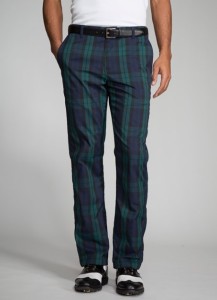
3.) Thermal/Cooler bag. Mine is from Bass Pro, but I don’t think they made them anymore. If you have an old golf bag without cooler pockets, just throw one of these in a side pocket and you’ve got yourself a cooler bag. Even in my small carry bag, it holds about 8-10 beers depending on ice.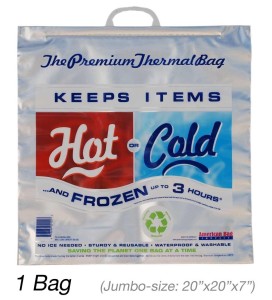 4.) Cigars. I like Arturo Fuente Hemingways. Easy to light, consistent, and delicious.
4.) Cigars. I like Arturo Fuente Hemingways. Easy to light, consistent, and delicious. 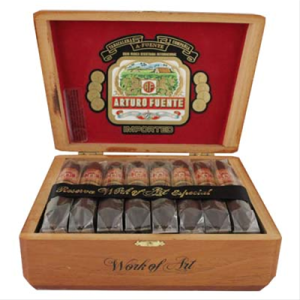
5.) Chubbies Mint Julep short pants. I say short pants, because the inseam is 5.5″.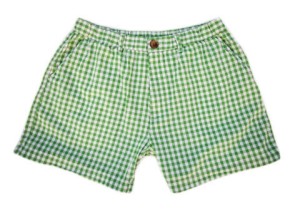 6.) Koozie. Because ‘Merica. Always keep a few in the bag.
6.) Koozie. Because ‘Merica. Always keep a few in the bag.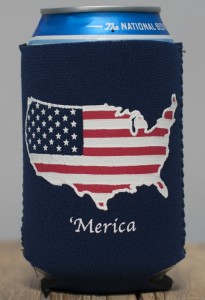
7.) I’ll be on the course during The Masters, so lets hope the NBCSportsLiveExtra app gets good reception.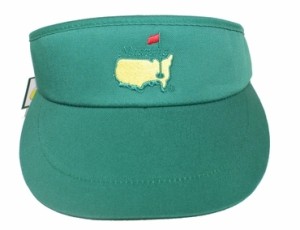 8.) Brooks Brothers Golf Polos. A staple. You won’t find me in crazy shirts or flat brim hats.
8.) Brooks Brothers Golf Polos. A staple. You won’t find me in crazy shirts or flat brim hats.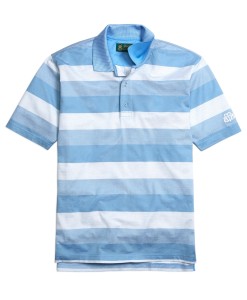 9.) Jet lighter with a punch, for when its windy, and you forget your cutter. I’m a rose gold fan, but generally, I just carry a ronson in case I lose it. Don’t forget to purge your lighter before you refill.
9.) Jet lighter with a punch, for when its windy, and you forget your cutter. I’m a rose gold fan, but generally, I just carry a ronson in case I lose it. Don’t forget to purge your lighter before you refill.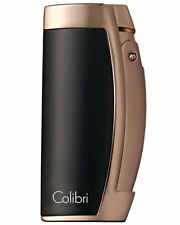 10.) Caddyshack Belt. This is the one item on this list I don’t own, but it looks pretty sweet.
10.) Caddyshack Belt. This is the one item on this list I don’t own, but it looks pretty sweet.
by rsiv with
Warning: count(): Parameter must be an array or an object that implements Countable in /home/bonviv6/public_html/wp-includes/class-wp-comment-query.php on line 405
Warning: count(): Parameter must be an array or an object that implements Countable in /home/bonviv6/public_html/wp-includes/class-wp-comment-query.php on line 405
no comments yet
Rosetta Stone, Duolingo, getting conversational for travel, Cabaiguan petites
In High School, I took French. I’m not sure why, but I think it had something to do with me thinking French was fancier than Spanish. I very much regret not taking Spanish now. I’ve been to France, once, while on a cruise, and was only in Nice for a day. I’ve been to Montreal about three times, but I could have gotten by without any French. I’ve been to Spain, Mexico, Guatemala, Uruguay, Chile, and Argentina. I studied abroad in the latter two. Living in Northern Virginia, I run into Spanish speakers constantly, and French speakers rarely, if ever. Spanish would have been much more practical. Even so, I was not very interested in learning a language in High School. I did not learn very much, and retained even less.
Before the global residency in my MBA program, I borrowed Rosetta Stone from a friend (and therefore, had limited functionality while using the program). I found it very helpful. With a few months of practice, I was conversational in Spanish. By conversational, I mean I could direct a taxi, order a steak and beer, ask basic directions, find a bathroom, and conduct monetary transactions. My greatest Spanish achievement was obtaining a Chilean National soccer jersey for my friend as a souvenir. I asked around while I was in Chile, and finally was directed to a shopping mall a few metro stops away. I rode the metro, found the mall by asking directions, and finally sporting goods store. I did not see the jersey I wanted, but by being able to say, “red”, and, “shirt” in addition to, “Chile”, they brought one out from the back. Despite tons of other really great memories, my common shopping errand holds a special place. It would not have been possible without Rosetta Stone.
Fast forward to earlier this winter. Some friends and I decided on Montreal for New Years Eve. They have an awesome celebration, and Montreal is a great destination in and of itself. Amazing museums, great restaurants, and a Casa Del Habanos are a few of the highlights. I don’t believe there is a better option than Rosetta Stone for learning a language. However, I did not want to spend more on Rosetta Stone French, than on the trip itself. I friend told me about Duolingo. Duolingo is set up almost exactly like Rosetta Stone. The kicker is that its free. If you’re looking to learn a little of a language before a trip, definitely check it out. Using it for about a month before Montreal, I was able to pick up numbers, common greetings, and how to ask where the bathroom is. Just the bare necessities, but they proved to be useful. I have a new trip scheduled to a Spanish speaking country, and I’m going through Duolingo Spanish from the beginning. I also intend to repeat the relevant parts of Rosetta Stone (shopping, travel, etc.).
This was not a comparison, but for those that may have found this post via google, I’ll say this: For traveling for pleasure, for less than a month, I’d recommend Duolingo. Its great, and its free. For traveling for business, or for over a month, get Rosetta Stone. Its comprehensive, but you’ll have to pay a fair price.
Not matter what you decide to do, do it with style:
I had about 30 minutes to work on my Spanish, so I grabbed a petite Cabaiguan. Its the king of the quick smokes. If you haven’t seen my other Cabaiguan posts, click here, then here.
by rsiv withWarning: count(): Parameter must be an array or an object that implements Countable in /home/bonviv6/public_html/wp-includes/class-wp-comment-query.php on line 405
Warning: count(): Parameter must be an array or an object that implements Countable in /home/bonviv6/public_html/wp-includes/class-wp-comment-query.php on line 405
no comments yet
